


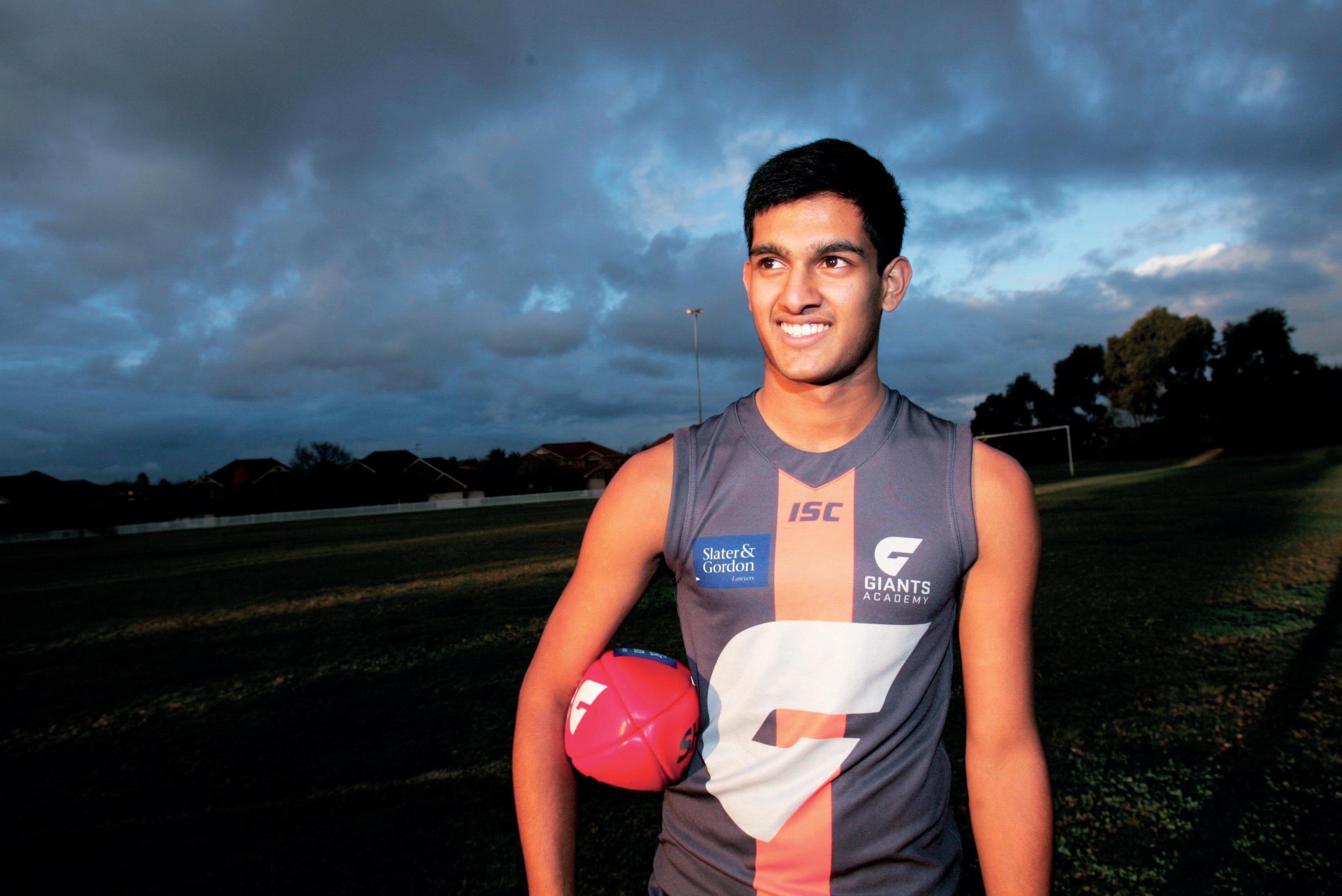
FREE Vol. 20 No. 10 (2) • JULY (2) 2013 • www.indianlink.com.au FORTNIGHTLY SYDNEY 2013 NSW Premier’S multicultural media aWardS Best News Report Best Online Publication of the Year Best Image of the Year 2012 ParliameNt of NSW multicultural media aWardS Multicultural Journalist of the Year Editorial / News Reporting Online Innovation in News Blog or News Website Design 2011 NSW Premier’S SubcoNtiNeNt commuNity aWardS Harmony Award indian link an award-winning media group Finalist in 7 of the 10 categories Level 24/44 Market St, Sydney 2000 • GPO Box 108, Sydney 2001 • Ph: 18000 15 8 47 • email: info@indianlink.com.au Sydney • Melbourne • AdelAide • briSbAne • Perth • CAnberrA SYDNEY EDitioN Moving beyond cricket

2 APRIL (2) 2013 www.indianlink.com.au

JULY (2) 2013 3 NATIONAL EDITION


4 JULY (2) 2013 www.indianlink.com.au
INDIAN LINK
PUBLISHER
Pawan Luthra
EDITOR
Rajni Anand Luthra
ASSISTANT EDITOR
Lena Peacock
Sheryl Dixit
MELBOURNE COORDINATOR
Preeti Jabbal
CONTRIBUTORS
Prashant Dixit, Deeksha Chopra, Ritam Mitra, Malli Iyer, Farzana Shakir, Komal Utsav Jagad, Nima Menon, Hamsa Venkat, Dolly Singh Miranda, Noel G De Souza, Jyoti Shankar, Saroja Srinivasan, Sandip Hor, Minnal Khona, Mallika Goel, Sujith Krishnan
ADVERTISING MANAGER
Vivek Trivedi 02 9262 1766
ADVERTISING ASSISTANT
Nitika Sondhi 02 9279 2004
DESIGN
Danielle Cairis
Proud member of:
Indian Link is a fortnightly newspaper published in English. No material, including advertisements designed by Indian Link, may be reproduced in part or in whole without the written consent of the editor. Opinions carried in Indian Link are those of the writers and not necessarily endorsed by Indian Link. All correspondence should be addressed to
Indian Link
Level 24/44 Market St, Sydney 2000 or GPO Box 108, Sydney 2001
Ph: 02 9279-2004 Fax: 02 9279-2005
Email: info@indianlink.com.au
www.indianlink.com.au
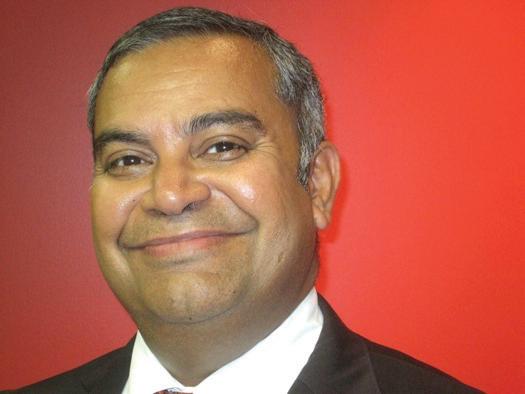
A brave new world
As we go to press, there are celebrations in the United Kingdom and the world, as news of the birth of son of the Duke and Duchess of Cambridge is announced. Congratulatory messages continue flowing in from around the world, from Commonwealth and non-Commonwealth countries and their leaders. While US President Barack Obama tweeted, ‘So pleased to congratulate the Duke and Duchess of Cambridge on the joyous occasion of the birth of their first child,’ Australia’s Governor-General Quentin Bryce issued a statement welcoming the royal arrival saying, ‘On behalf of all Australians, I send heartfelt congratulations to the Duke and Duchess of Cambridge on this joyful occasion. The birth of a baby is an experience to celebrate and cherish. We wish the new parents every happiness and send warm greetings of welcome to the little prince’.
The child will be third in line to the throne after Prince Charles, (born 1948,
Queen Elizabeth’s eldest son) and Prince William (born 1982, Charles’s eldest son). Looking at the lineage and life expectancies of the family, it can well be till 2065 before he ascends to the throne. The pertinent question is, will Australia still be a constitutional monarchy, or would we have thrown our shackles off and become a republic? It will be worth remembering that the respect for our British heritage will always exist, as it still does in India and other parts of the world, where Britain has had an influence. It is just that if Australia becomes a republic, it will allow it as a nation, to create an identity of its own without diminishing its values and its antecedents. With its Asian Century White Paper and its desire to be closer to Asia, Australia being a constitutional monarchy does not make sense when most of the neighbouring countries are strong Republics in their own right.
Australia needs to move forward in the brave new world with its own head of state responsible to its own people, rather than the Queen or King in another country. While the idea of becoming a Republic has been debated before and even put forward as a referendum twice in the past (and defeated), perhaps a new push needs to be made in this direction.
One is sure that a President of Australia can be nominated, who will have the interests of all Australians at heart and will be apolitical. India has been doing this for over 63 years; it is time Australia joined this part of governance while keeping its Commonwealth traditions alive.
On another matter, in this new world one needs to acknowledge and admire the bravery of Pakistan’s Malala Yousafzai and her family. Malala has become a symbol of courage for her activism in education and women’s rights in the Swat Valley, where the Taliban has at times banned girls from attending school. In retaliation, the Taliban shot her in her neck and head as she returned home from school, just nine months ago. Malala was in a critical condition but has recovered and earlier this month on her sixteenth birthday, made a passionate speech at the United Nations in which she said education could change the world.
While she spoke about education, she also acknowledged that being shot in the head changed nothing for her other than ‘weakness, fear and hopelessness died’.
In this new world, a brave new soul who can talk about her convictions has inspired all.

JULY (2) 2013 5 NATIONAL EDITION
PAWAN LUTHRA
EDITORIAL






6 JULY (2) 2013 www.indianlink.com.au Footy? Huh? Is that a type of cricket? contents 14 20 11 25 30 Indian Link sPecial features 11 13 25 30 indian link L i N ki N g i N di A W i TH AU s TRAL i A indiaoZ Indian HRD minister’s visit to Sydney boosts bilateral ties science Sanjay Sreekumar develops app to help self-detect the early stages of breast cancer youtH Amardeep Gill takes on the challenge of guest editor at Time Out staGe The play About A Brown by MAYA YIPA is a winner Party Girls just wanna have fun at Sydney Sakhi Sangam 20



JULY (2) 2013 7 NATIONAL EDITION For expert coaching in Lowest Fee Guaranteed IELTS ENGLISH GURU Suite -1, 71 A Macquarie St, Parramatta, Phone 0411 520 546, 9687 9741 www.englishguru.com.au • Power Packed Sessions. • One and Two Weeks Crash Courses Available. • Money completely refundable, if not satisfied with the first tuition session. ACC-C RIC k ET C Lub Play cricket with friends! Ashfield Croydon CC welcomes boys & girls 5 years through to 16 years. Register to play with Ashfield Club. www.acc.nsw.cricket.com.au or contact 0400 379 619 or email admin@cricketacc.org.au
sPiRiTUAL
gopa kuteeram
4th sunday of every month

4pm-5:30pm
The Global Organisation for Divinity runs free spiritual educational classes for children aged 4-12 years. Crestwood Community Centre, Crestwood Drive, Baulkham Hills. Parents can join in the devotional lecture by Sri Deepak Vinod. Classes are also being run in Liverpool.
Baulkham Hills details: Jayashree on 02 9620 4676. Liverpool details: Deepak Vinod 0422 127 956.
Ramakrishna sarada Vedanta society of NsW activities
Sri Krishna’s Birthday at Vedanta Hall
sun 1 sept 10.40am-12midday
Program insilent Silent
Meditation, Group chanting of the Sanskrit and reading of the English translation of Chapter 8 of the Bhagavad
Gita, Talks by Pravrajika
Gayatriprana & Saptarshi Ray.
Venue: Vedanta Hall, 15 Liverpool Road, Croydon.
Details: 02 9745 4320 or email: admin.saradavedanta@ bigpond.com.
Website: www.saradavedanta.org
F u NNYSIDE up
WHat’s on
Swami Vivekananda’s 150th
Birthday
Tues 17-Wed 18 sept 2pm & 7pm
Play at Sydney Opera House: Oneness - Voice Without Form
The Extraordinary Life of Swami Vivekananda.
Details: www.sydneyoperahouse. com
AWgP Australia
If you want Yagya, Satnarayan Katha, various Sanskara (Vivah, Janma Divas, Vivah diwas, Namkaran, Punsavan, Mundan, House warming, Bhumi poojan etc.) at home please contact any one of the Gayatri Pariwar parijan. Donations welcome.
Details: Archana/Anand Jaiswal 0404 430 730 or visit www. awgpaustralia.org.au
shri shiva Mandir sri Navavarna Pooja, sri Yantra/ Chakra Pooja
sun 4 Aug 8am-1pm
All devotees are cordially invited to participate in the Pooja, but only the sponsors will be blessed with Sri Chakra. Pooja Thali (plate): donation of $21 per family. Shri Shiva Mandir, 201 Eagleview Road, Minto.
Details: Jagdish Chawla 0421 276 384 or jagdish1@ optusnet.com.au
All World gayatri Parivar Yagyas at your home Yagya, Satnarayan Katha, various Sanskara (Vivah, Janma Divas, Vivah diwas, Namkaran, Punsavan, Mundan, House warming, Bhumi poojan.
Details: Rohit/Shweta Aggarwal 0437 106 626 Balsanskar shala Vedic knowledge and more for your children.
Details: Parag/Niyati Wani 0421 403 852
seniors day Care Centre, Baulkham Hills
Sri Om Foundation is planning to open a Day Centre at Baulkham Hills early Aug 2013 for those resident in Castle Hill, Baulkham Hills and Cherrybrook areas. This will cater to all frail aged seniors aged from 70 and above. Structured programs for the frail aged will be organised. Sessions will be in one of the council facilities and Pick Up and Drop Off from home have been organised. Admission is limited.
Details Shweta 0405 367 238.
FiLM
gHARA presents Satyagraha sat 17 Aug GHARA helps adults with
intellectual disabilities in the poorest communities of Bangalore India
This movie will be held at Blacktown Hoyts as a fundraiser.
Details: Kylee Davis 0410 657 896, ghara.trust@gmail.com or www.ghara.org
iNdiA dAY
iNdAUs Fair
sun 11 Aug 11am-6pm
Indian Independence Day celebration. All proceeds go to the Uttarakhand disaster relief fund. Rosehill Gardens, Rosehill Race Course, Rosehill. Marketing and sponsorship opportunities available.
Details: www.indausfair.com.au
india day 2013 dinner Function sat 10 Aug 6pm-11pm
Join us in celebrating India’s Independence Day and experience the rich cultural diversity, heritage and harmony.
Tickets: starting from$45 each. $2 from each ticket goes to Child In Need India Charity.
Bowman Hall, Campbell Street, Blacktown.
Details: Shail Wadhwa 0423 894 531 or shail@ohmtel.com.au or www.cia.org.au
UTTARAkHANd FLOOd RELiEF EFFORTs
sewa international Australia (inc)
Donations can be made by Bank Transfer to
A/c Name: Sewa International (Aust) Inc. BSB: 063121 A/c No: 10782026. Please put URF [your name] in description. Send email to siamelbourne@gmail.com if a receipt is required. 100% of the donations will be sent to Sewa International Bharat and will be solely used for providing relief to flood affected people.
Details: Rakesh Auplish 0408 381 487.
All World gayatri Pariwar Cheque/online donation can be made in the name of: Shantikunj Apada Rahat Kosh A/c VGT SBI A/C No: 30491675367
IFSC: SBIN00010588.
Alternatively, you can use accounts of the Shri Vedmata Gayatri Trust: HDFC A/c No: 0943 145 000 0157 (14 digits)
IFSC Code: HDFC0000943, or PNB A/c No: 3129 010 100 000018 (16 digits)
IFSC Code: PUNB0469400 Email: donation@awgp. org, abroadcell@awgp.org, shantikunj@awgp.org
8 JULY (2) 2013 www.indianlink.com.au



JULY (2) 2013 9 NATIONAL EDITION


10 JULY (2) 2013 www.indianlink.com.au
boosts bilateral ties
Collaborative research ties between Australia and India are set to increase in the fields of health and energy
Higher Education Minister Kim Carr announced that a $10 million grant will be made by the Federal Government to support four new collaborative projects between India and Australia towards research and fellowships for Australians working in India
It was an opportunity to change the presumption about Indian politicians.
Burdened by the reputation of Indian politicians as “old school,” the charismatic, Indian HRD Minister Dr M M Pallam Raju seemed to strike all the right chords with his Australian counterpart, Higher Education Minister Kim Carr.

Dr Raju was in Australia on a crucial three-day visit from July 10-12 to attend the annual Australia-India Ministerial Dialogue on Education Cooperation and the second Australia-India Education Council (AIEC) meeting. The bilateral meetings were planned to boost the collaboration and expansion plans for educational and research ties between India and Australia.
Higher Education Minister Kim Carr announced that a $10 million grant will be made by the Federal Government to support four new collaborative projects between India and Australia towards research and fellowships for Australians working in India.
“I was very pleased to discuss with Minister Raju the range of collaborations between our
technology, biotechnology and climate change”.
“Australia and India’s economies and peoples are among the best placed in our shared region to benefit from opportunities in the Asian century. If we are to maximise the gains from our position it is essential that we recognise and support each other’s strengths in order to lift economic performance, at both a national and individual level, and boost both countries’ economic prosperity,” Senator Carr said.
The $64 million AISRF has supported more than 100 projects and workshops, involving more than 80 leading Australian and Indian universities and research institutions, since it began. It is Australia’s largest fund dedicated to bilateral research with any country, and is one of India’s largest sources of support for international research.
Dr Raju was quick to post about the success of the bilateral meetings on Twitter. “The conclusion of the second Australia-India Education Council meeting was on a positive and a very optimistic note about the potential of the future,”
Mr Raju tweeted.
The Indian delegation along
India plays as a strategic partner in the area of research with the UNSW was broadly discussed.

“We are looking to expand and also try making higher education more enabling for our young Indian students,” Dr Raju said. “The progress we would like to make on this front is a greater exchange of faculty and students mobility between the two countries”.
It presented an opportunity for Dr Raju to explain the Indian Government’s recent formalisation of rules for establishment of campuses of foreign universities and educational institutions in India. The focus of the interaction was to invite foreign education providers to India.
“There was discussion about jointly supervised PhD programs, which would enable students to split their time between Australia and India and receive qualifications from both countries,” Dr Raju said. “We have an agreement called ‘Twining arrangement’ whereby Australian universities can partner with one of the Indian universities and offer a programme in an area of mutual interest and the student can be awarded a joint degree by
sculpture of the father of our nation in the UNSW,” Dr Raju said.
Educating 500 million Indians under the age of 25 is an onerous responsibility on the 51-yearold’s shoulders. “Our education system should equip students with knowledge-based employable skills,” Dr Raju said. “The biggest challenge of the Indian education system is to produce quality students who can be employed by any part of the world. Also, the focus is capacity building for secondary education in India and industry linkages”.
Dr Raju has set the target high. “India’s gross enrolment ratio in higher education is currently 18 per cent and the target must be taken to 30 per cent by 2020,” he said.
The minister views Australia as a popular destination for higher education, despite the furore of negative media since the wellpublicised reports of crimes and robberies against Indians in Australia in 2008-‘09 that were described as racially motivated crimes. Dr Raju is pleased with the measures implemented by the Australian Government and universities in aiding the welfare and safety of Indian students
since the attacks five years ago. The Minister does not attribute the dwindling number of Indian students coming to Australia on that account. “There are two reasons why there is a drop in the number Indian students coming to Australia in recent years,” Dr Raju said. “One is the Visa regulation that doesn’t allow them to stay on in Australia after finishing their degree, and the other is the rising Australian dollar, which makes international education very expensive”. There are frameworks being formulated acknowledging Indian work experience and education, revealed Dr Raju. “We are working on mutual recognitions,” he said.
“We have come out with a frame that recognises prior work experience and learning which will be incorporated into the vocational educational framework what we will call is National Vocational Educational Policy Frame work”.
Despite working his way through a busy schedule amid endless meetings, Dr Raju’s last words in Australia, perhaps prophetic, were on Twitter: “Sunrise over Sydney harbour as I prepare to head back home today morning. Sydney is a beautiful city and I will miss it”.
JULY (2) 2013 11 NATIONAL EDITION
indiaoz
Minister Raju at UNSW
Professor Frederick G Hilmer, President and Vice-Chancellor of UNSW and M M Pallam Raju, Indian HRD Minister

12 JULY (2) 2013 www.indianlink.com.au
Yapping saves lives
BY RiTAM MiTRA
sanjay Sreekumar is not your average software engineering student. Just nineteen years old, Sanjay has recently developed a smartphone app that assists its users in selfdetecting the early stages of breast cancer. On June 25, the app was inaugurated at Parliament House in front of not only Federal MPs, but also ambassadors of several countries as part of the Australian
Parliamentary group, Federal Parliamentary Friends of Breast Cancer Awareness among Young Adults. Sanjay, who presented the app at its inauguration, developed it with the assistance of a team in order to promote the YAP (Young Adults Program), a charitable organisation that encourages healthy behaviour in young adults.

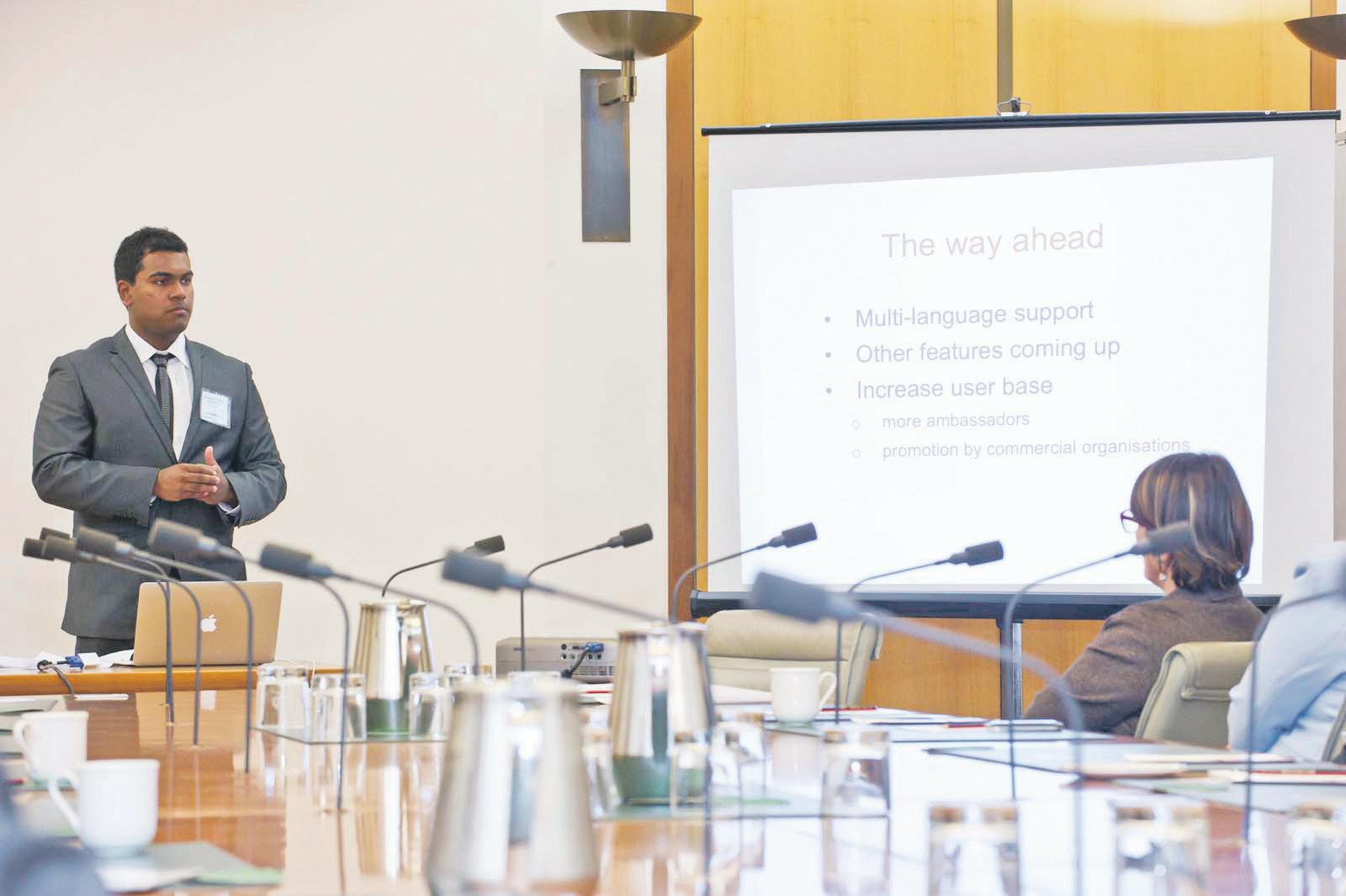
Breast cancer is one of the most common types of cancer, with Australian women exposed to a 1 in 8 lifetime risk of contracting the disease. It is estimated that 14,940 Australian women and more than 100 men will be diagnosed with breastcancer this year. Most women survive breast cancer, with the five year survival rate
Peter, Sanjay was given the green light to go ahead and design the app, an opportunity for which he is extremely thankful. He has already designed a number of apps and websites with the assistance of his own local development team, but the thought of making a difference is very important to Sanjay.
“This started as a passion, and now it seems it is growing into a business,” Sanjay says.

“These days I get lots of requests for apps through my website SanjaySreekumar.com. Currently I am making two game apps, which are fascinating me to the core, but nothing fascinates me more than the app that I built for YAP. I feel I am saving hundreds of human lives just through that app. I would like to thank the YAP team for accepting my offer to build the app for them”.
Although studying software engineering has helped Sanjay to a certain extent, he has had to rely on his own devices for much of the journey. “I had to read and understand everything myself. However, it was not that difficult. I had the drive to learn, since the idea of saving lives really drove me. The YAP App is free, and I would like it to be free so that the app is available to everyone in any country, thus serving its purpose well,” he added.
language support.
Leticia Lentini, Google’s Australia/ New Zealand Events and Brand Marketing Manager, was particularly impressed by the app, mentioning that it was a “good example of ‘how do you use technology for good and how do you use technology to spread the word’”. www.yapstuff.org, the home of the YAP initiative, has been supported by Google grants since 2005.
In the meantime, Sanjay wants to mass promote and market the app in order to reach a wider range of people. “Many businesses, shops and other organisations would be interested in supporting and promoting this app,” he says. “But many of them would be quite interested in promoting this if they get some business advantage too. Our app provides such organisations a tool called ‘App Badging’. Organisations that promote the app get exposure by having their business image displayed in the app”.
As for his personal plans for the future, Sanjay is noncommittal. “My parents always gave me freedom to pursue the career of my choice, and I wanted to be a computer assembler. Later, my interest changed to software, and my parents were always with me. My interests might still change. Currently I am really looking at a career in software development,” he says.
One of the most exciting events for Sanjay in the development of the app was its inauguration in parliament House
To anyone out there who is interested in creating apps, or exploring other interests that they’re at all unsure about, Sanjay has words of advice, “I would like to suggest this to my young friends: One, do only what you like to do. Two, find a good mentor and three, stick to their advice no matter how hard it might seem initially,” he stated.
JULY (2) 2013 13 NATIONAL EDITION
SCIENCE
The launch of the Australian Parliamentary group, Federal Parliamentary Friends of Breast Cancer Awareness among Young Adults
Sanjay Sreekumar presenting his Yap App
Looking beyond
Indian community is moving away from stereotypes to become involved in footy across various levels
Y RAJNi ANANd LUTHRA
hen Trevor Banerjee arrived in Australia ten years ago as an international student, he found himself drawn to Aussie Rules Football. He thought at first it was because his extensive basketball and soccer experiences were giving him an advantage on the field. While that may have been true, he soon realised that what the sport was offering him, was a platform to connect with the mainstream community.
“There is an essential yaarana about AFL that I simply love,” he says. “It’s called ‘shepherding’: I have the ball, and if someone tackles me, my guys will protect me. On the field, your differences dissolve; you look after others like your own brothers”.
He got so involved with the game that he played in the 2011 AFL International Cup, pitching in as a local for a team from India, the Indian Tigers, that did not


have enough numbers. That experience urged him to want to launch a community team, to initiate Indian-Australians into the game.
Indians for AFL? You must be joking!
WHe got no support from the Indian community. No one will be interested, he was told; there will be no players, and no sponsors.
Today, his Masala FC is not only up and running, but has been winning games, attracting sponsorships and drawing players. Its players come not only from the subcontinent but also from Zimbabwe, Afghanistan and Russia. A junior team is on the cards, and Banerjee’s dream is that one day there will be a women’s team in the club.
“When I tell an Australian that I’m a part of an AFL team, there’s a sparkle in their eye which is priceless,” Trevor says.
Sport can indeed be an effective tool to help migrants integrate into society.
Contact sports have never had a large following among Indiansunless the traditional kabaddi can be considered one! But times are changing, with the mass appeal of these rubbing off on migrant Indian communities in Australia
and New Zealand. South Asianorigin players are taking to AFL, Rugby Union and Rugby League at the lower levels like never before, and while we still wait for one of us to make a mark with the Baggy Green, who’s to say a footy or rugby player doesn’t get there first? Hey, if Chinese-American Jeremy Lin could excel at the National Basketball League…
It might be a thing of the past to say that Indians lack the physique for these sports.
Sport administrators have themselves begun reaching out to multicultural communities like never before.
A number of clubs are approaching the Indian community with opportunities to engage with their particular leagues.
AFL’s Essendon Football Club for instance is focussing on the north-west of Melbourne which has a sizable Indian population, with Dyson Heppell as its Indian Ambassador. It entered an Indian team in this year’s Unity Cup, which focuses on strengthening ties with Police, Muslim and other CALD communities through a mutual appreciation of Australian Rules football. The ‘Bharat Bombers’ won two out of their
four games.
Richmond has defender Bachar Houli, a practising Lebanese Muslim, as its Multicultural Ambassador.
Other clubs have specially appointed multicultural development officers or community engagement officials to design programs to deliver specific outcomes to targeted communities.
Even smaller scale token efforts are making a mark, such as AFL’s invite to Bollywood actor Vidya Balan when she was in Melbourne earlier this year, to present the match ball to the referees before the start of a game. (She did so in a bright red sari with a backless blouse, the chill in the air notwithstanding. She admitted she was not familiar with the game at all, but that she was looking forward to the “eye candy”).

And in the midst of all these efforts, we have individual members of the community shining forth with flashes of brilliance, at various levels of the game. While some are starting to push through and make a mark, others are impressing simply with their passion and commitment to a game they did not know growing up, but have since embraced.
And in all of them, the lifting of the gaze away from the allpervading cricket ball, to try a differently shaped one, is truly commendable.
Representing Australia in the Universities World Cup
Jason Ram is about to reach a milestone in his Rugby League career. Next year, he will have played for 25 straight years. And he is only 29 years old.
“If my body is still holding, I will definitely consider going further”.
Jason’s family moved to Sydney from his native Fiji when he was five years old. He had already been introduced to the game by an uncle who represented Fiji in Rugby Union. But when he saw his first game here in Australiathe Cronulla Sharks were playing - he was hooked.
Andrew Ettinghausen has been a lifelong hero.
“His speed and ability, those length-of-the-field tries, were something I wanted to replicate”.
In 2008, Jason represented Australia in the Universities’ World Cup as a Sydney Uni student, and this urged him to try out for Fiji’s national team. He

14 JULY (2) 2013 www.indianlink.com.au
The
cricket
didn’t make it ultimately, but won a chance to play in the American National Rugby League, for the Philadelphia team Glen Mills Bulls.
“A fantastic opportunity, it was a development thing for their players. I absolutely loved that experience”.
Has he ever felt disadvantaged due to his racial background?
“No, not really, but it can be good to know a few people here and there! Develop your talents and you will be noticed… they’ll be willing to take you on!”
Today Jason plays half-back with the Bass Hill Broncos. But currently, he’s nursing an injury.
“Last weekend I got poked in the eye, and two days on I’m just getting my vision back!”
His injuries list is rather long, Jason reveals.
“I’ve dislocated my right shoulder five times and my left shoulder six times. But you know, injuries are part and parcel of sport, any sport really. You’d think golf is not strenuous, but Tiger Woods has had double knee trouble, shoulders… The fitter you are, the less likely you are to get hurt, so look after yourself”.
Jason’s message to the Indian community is to get out there and
Many cultures, one game
get involved in the game, even as spectators.
“It’s a great game to watch, a wonderful spectacle, and can be a great day out. Support a local team, or an NRL team, and come join the fun!”
Making the first fifteen at Trinity Grammar Manish Poologasundram, school captain at Sydney’s Trinity Grammar School has been a Rugby Union player since he was eight years old. Today he is in the school’s first fifteen.

“I started in the C team,” Manish reveals. “But there was great desire and much commitment, and the coaches saw my eagerness”.
In fact, the 17-year-old claims his rugby career so far has taught him that if he puts his mind to anything, he can attain it.
“That’s why I am school captain”.
What brought him to rugby?
“Rugby involves teamwork more than any other sport. Cricket is a team game but it is still played by eleven individuals”.
He adds that he has benefitted academically thanks to rugby.
“As a Year 12 student, I’m currently preparing not only for
6th, I have a very tight schedule, and that forces me to have a very structured study routine. In fact rugby is a great break from studies”.
He counts rugby greats such as David Pocock, Nathan Sharpe, Martin Johnson and Chris Jack as his inspirations.
“Even if you have a little desire, I’d say, go for it, give it a try,” he urges. “My brother only tried the sport in his last year of school. He says it is his biggest regret that he did not play before!”
His mum Anjali is his biggest fan. “I did not follow the game till Manish played. Initially I was concerned about injuries etc, but he was always so keen, and my husband Hari was so supportive, I didn’t want to stop them”.
Manish dreams of playing with West Harbour one day.

Captain of the Under 16s
Damendeep Singh Aujla of Lalor, Melbourne, has just returned
In a bid to recognise, embrace and encourage greater involvement of multicultural communities, the Australian Football League launched the 2013 Multicultural Round in Melbourne recently. Under the logo ‘Many Cultures. One Game,’ the AFL has implemented several initiatives to engage multicultural communities and promote social harmony.
“It is important the AFL reflects cultural diversity, providing an environment which welcomes people from all backgrounds to enjoy our game as supporters, players or administrators in the future,” said AFL Head of Diversity, Jason Mifsud, on the occasion.
According to Misfud, AFL remains committed to strengthening the landscape of opportunities available for their multicultural community group. “We are also proud to see AFL players from non-multicultural backgrounds supporting multiculturalism, as the entire AFL community, irrespective of background, strives to strengthen diversity, inclusion and cultural understanding in our game,” he said.

Over the year, several multicultural talent academies were held in each Australian state and an Under-16 world team was selected to participate in the NAB AFL championships held in Sydney to coincide with the multicultural round. Under the Australia Post AFL Multicultural School programs, the AFL Multicultural ambassadors have visited 300 schools and brought thousands of culturally diverse people to the game by teaching football skills and reinforcing key themes of leadership, harmony and respect.
The AFL Multicultural round 2013 initiatives include the use of orange flags by umpires to represent social harmony, half time games between junior multicultural teams, and cultural diversity forums being organised in various states. They also include sporting events and programs to introduce the game to international students and consular staff from various countries, and inclusion of performances from multicultural artists.
Preeti Jabbal
from a successful tour in Sydney at the NAB AFL Under-16 Championships. As captain, he took his team to a first-ever Division 3 victory, after being undefeated in all three games. Coach Anthony Koutoufides, former Carlton captain, described Damen as “one of the most talented boys in the team and certainly one of the better players in Sydney”.
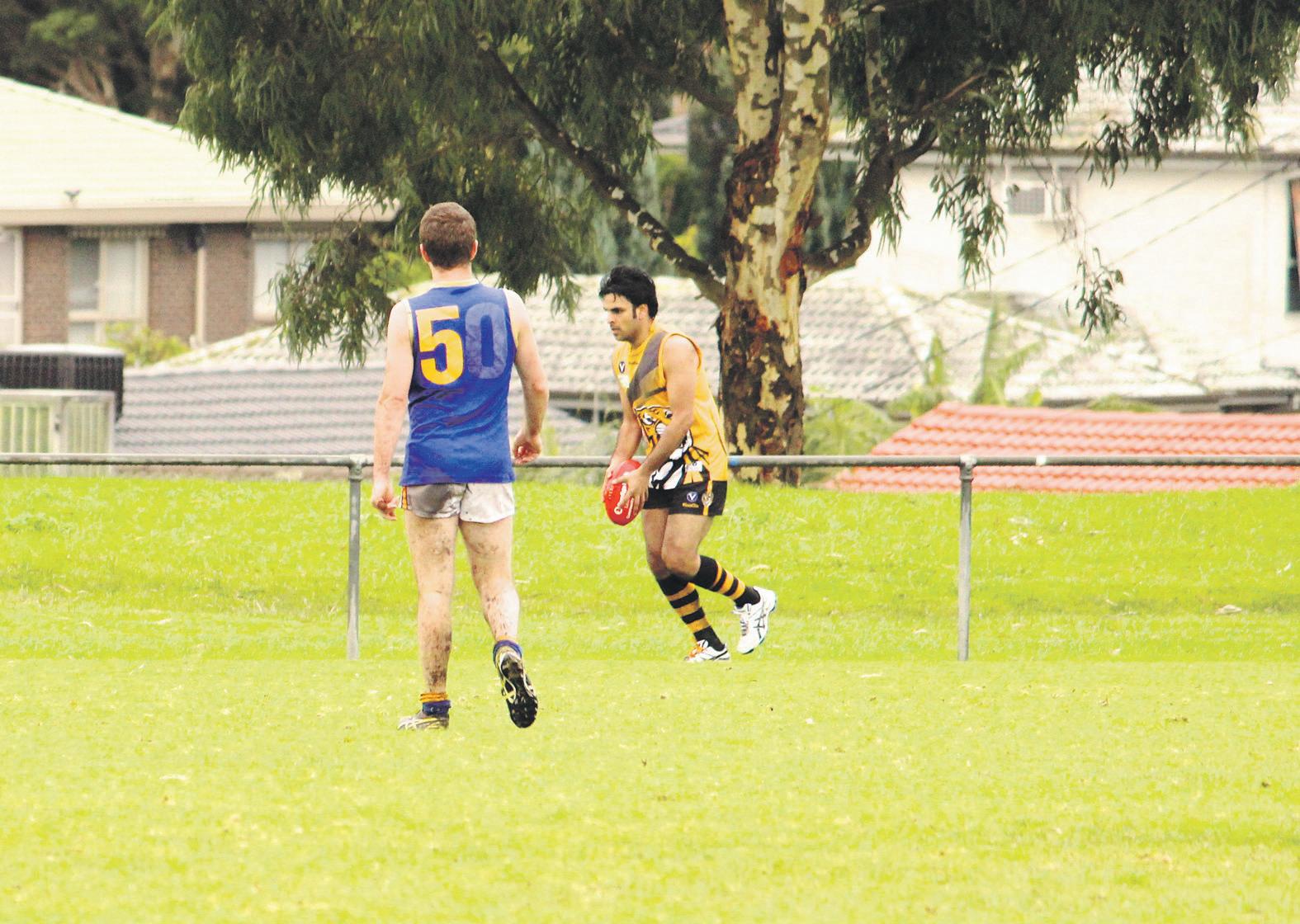
Damen was discovered by AFL during a weekend camp in which 40 boys participated. He was among the 15 picked finally to make up the team for the Sydney event.

Damen comes from a family of sportsmen, traditional wrestlers who go back centuries. But this 16-year-old found himself loving footy at eight years of age.
“My friends got me into footy, and when I got a chance to play in the TAC Cup, I realised I was good at it and decided to put everything into it”.
With support from his family (who took time out to watch him play at Sydney), Damen dreams of future prospects in the game. Currently, he trains 6 days of the week, and competes on Sundays, fitting his Year 12 studies around his sporting schedule “He’ll definitely go far,” Coach Koutoufides says of him.
A NSW-ACT Ram
At the same event last year, Angad Roy of Sydney became the firstever player of Indian origin to represent NSW-ACT, playing for the Under-16 Rams side. Angad is currently taking time off from the sport for school reasons, and is already feeling antsy at not having played in recent months. He trained with the Slater & Gordon Giants Academy for three years where he had Ryan Hulihan, who played 200+ games for Carlton, as coach and mentor.
“I am drawn to AFL (more than other sports) because of the

JULY (2) 2013 15 NATIONAL EDITION
Damendeep Singh Aujla Manish Poologasundram Trevor Banerjee Yasser Hussain Angad Roy
From left:
fact that you have to be good at so many different things, such as kicking, handballing, fitness and pace,” observes Angad. “You need to have this to be successful and none of it comes without practice. This challenge has provided me with a work ethic not only in AFL, but in most parts of my life”.
He adds, “I have found I have improved a lot not only in terms of my AFL skills, but things like discipline, diet and the way I conduct myself overall”.
Life skills from rugby
49-year-old investment advisor Manjit Singh of Sydney was first exposed to Rugby Union as a young kid in Mumbai’s exclusive Cathedral and John Connon School, and continues to play to this day.
“At school I just wanted to be different because everyone else played cricket or hockey,” he laughs. “But I fell in love with the game. At that time India only had 10 teams that played, so as school kids if we wanted to play, we had to play against the men. I Didn’t realise at that time how important rugby was going to be in my life. In 1980, my family moved to Australia and I can confidently say that playing the game helped me make friends and to assimilate”.
Manjit played at school and with the Wahroonga Tigers, and later began to coach with the club.
Why rugby?
“Rugby is a very inclusive game with a great sporting spirit, one of the very few games in the world that brings players together
rather than dividing them. Like most team sports it provides great life learning skills - working under pressure, working for the team, working with the team, understanding your role in the overall effort, and relating to people from all walks of life”.
Today he plays with the community-based Killara West Pymble Rugby club, and continues to coach.

“Coaching and Killara West Pymble is all about giving back to a sport that has given me so much,” he reveals.
Community efforts with Collingwood
As Collingwood Football Club’s Community Engagament Officer, Harmit Singh likes to tell people his job is all about educating new Australians about football.
“In my six years with the club, I have seen some 2,500 school kids in Victoria go through our programs,” he tells Indian Link “We run clinics to teach the sport, bring the kids to the club for a look around, we give them tickets to games. We get the message across that football is a major part of Aussie life”.
AFL has been a major part of Harmit’s own life. He plays today for Morwell, and coached the Indian Tigers team for the 2011 AFL International Cup.
Something different from cricket
A practicing Muslim, 23-year-old Yasser Hussain is not playing footy in the ongoing Ramadan
period. But he continues to be involved with Masala FC, and promoting the game in the Indian community.
Arriving from India as a 5-yearold, he had an early introduction to the game with Auskick, moving on to the Juniors up to the Under-15 level with the Glen Waverley Rovers and Under-17s with Northvale.
“My parents must really be credited with that initial push,” he reveals. “They wanted me to try something other than cricket! And luckily I found that my cricket skills transferred well to footy”.
Moving to Abu Dhabi for two years, Yasser played there when the Mid-Eastern League started off.
“That’s where I bumped into Ash Nugent and we talked about promoting the game in India”.
Yasser’s mum Aain is a regular at all his matches, and has won the admiration of his teammates.
“She wears her scarf to the field, bringing not only an Indian, but also an Islamic aspect to the game!”
Aain herself says, “Yes I am very involved and enjoy supporting my son. In fact, sometimes I cheer so hard that my husband begins to avoid me! Yasser is a die-hard fan of the game and has taken me to see the big games at the MCG”.
Dad’s approval
Ten-year-old Prithish Pancholi of Melbourne is very proud to declare that his team, Glen Waverley Rovers Junior Football

Club, is currently “first on the ladder”. His interest in the game comes through loud and clear as he rattles off his training schedule. He’ll tell you he likes the game because it’s lots of fun and a lot of his mates are on his team.
“I play in the back
Rocking for the Sevens
Twenty-three year old Auckland-resident Rocky Khan isn’t just any ordinary rugby player. He is the first Fijian of Indian ancestry and also the first Rotuman (an island of Fijian dependency) to represent New Zealand in the Wellington Sevens. It’s a big deal! Players of Asian background or descent in any form, are a rarity in top rugby ranks. And the Sevens, with its spot firmly entrenched in New Zealand’s sporting calendar, not to mention cultural scene, may not be the All Blacks proper, but it’s pretty damn close. The event attracts over 30,000 spectators annually. A fast and furious version of rugby, Sevens matches are shorter than their rugby union counterparts, with each game running for two seven-minute halves (the final is played over two 10-minute halves), instead of the usual 40. There are also seven players instead of 15. 16 international teams compete for points that go towards the world series.
The event has become known as much for the sport, as for the creativity and celebration that surrounds it. Today the Sevens is about celebrating
the diversity of New Zealanders, in all their shapes, sizes, costumes and backgrounds. And with New Zealand’s massive ethnically diverse population – the fastest growing of which is Asian – it is appropriate (if not long overdue) for some of this cultural diversity to come through on the field.
When questioned about his unique position and all the historic ‘firsts’ he is making, the young player comes across as pretty modest.
“I am young and have a long way to go in the game,” Rocky says. “Obviously, I would love to play for New Zealand as I grew up an All Blacks fan but yeah, I’d still consider the offer to represent Fiji if it came my way”.

Rocky might downplay the significance of his role in having made the big leagues – but the rest of his homeland certainly isn’t. With headlines like ‘Let us rock you’ and ‘Living the Dream’, it is evident that he’s making waves across the board. Rocky’s success could help other kids realise their dreams too. To say New Zealanders are fanatical about their rugby would be an understatement;
kids grow up living and breathing it, and dreaming of being an All Black. Rocky Khan has just shown New Zealand’s migrant population that anything’s possible: “Just keep working hard, and doing something everyday that will help you achieve your goals and don’t stop doing it until you’ve reached that goal,” is his advice.
Mallika goel
www.indianlink.com.au
COv ER STORY
Young Rocky Khan is being lauded as a player of repute in the NZ Sevens
Aussie rules, Indian style
Sudip Chakraborty of the Indian Tigers team lives and breathes AFL


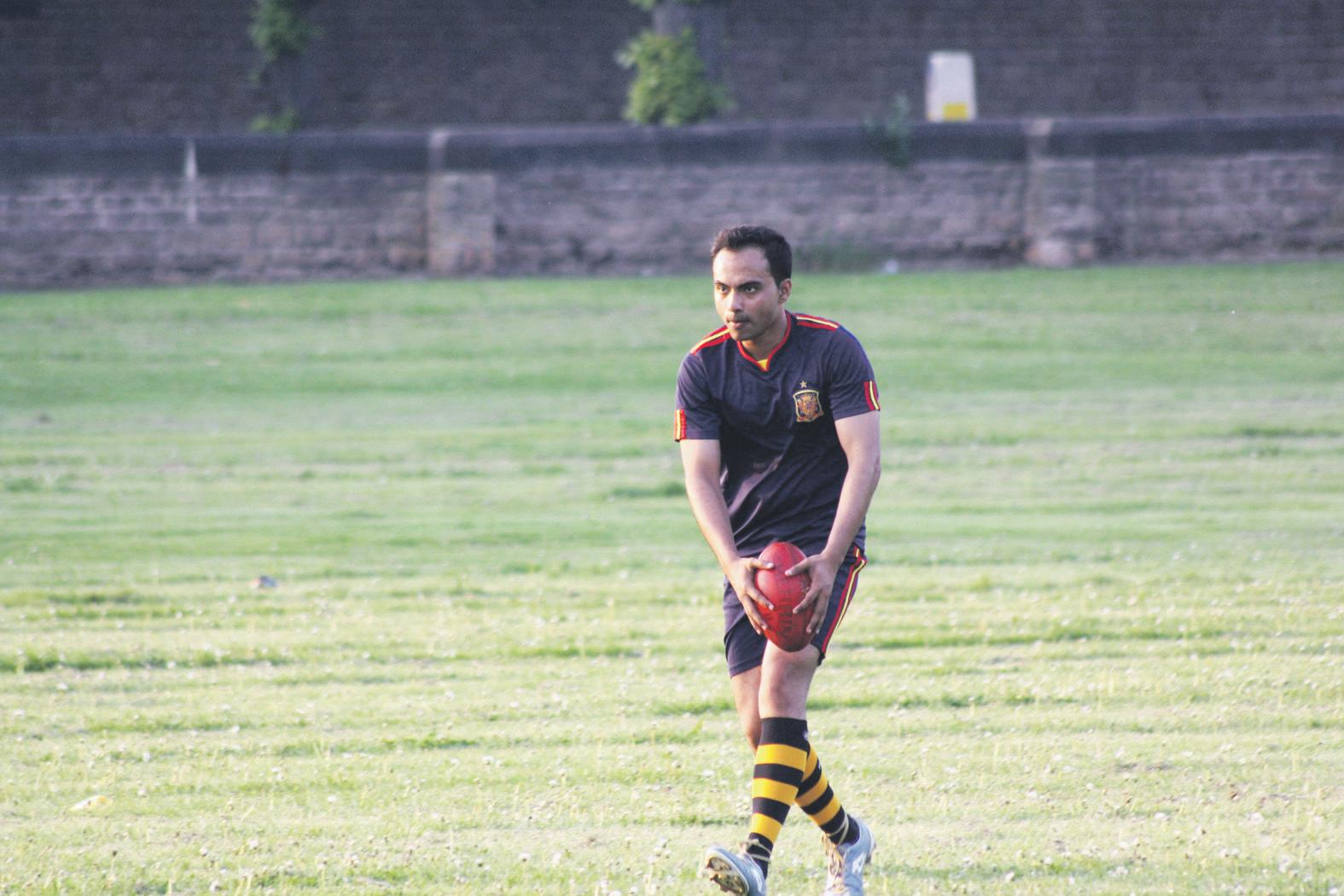
As a soccer and cricket player, Sudip Chakraborty was invited in his native Kolkata to a 2008 IPL Kolkata Knight Riders event. Aussie cricketer Ricky Ponting was there, and some of the invitees were asked to try out for a ‘new’ sport called Australian Rules Football.
“It was the first time I had
A team called the Indian Tigers was formed, but the organisers couldn’t sustain the momentum.

“Another player and I wrote to the AFL seeking help to keep it
another Australian in Mumbai
Lincoln Harris, showed some support. Some interest trickled
Despite stops and starts, they got a team together for the 2011 AFL International Cup played in Sydney and Melbourne. Help was sought from local Indian Australians to make up a full team. They tasted their first victory,

“It is the fastest outdoor sport in the world, and watching a game at the MCG, with one lakh supporters in the crowd, will surely make you fall in love with it”.
When he went to London to do a masters degree in sports management, his research topic was: How to develop the AFL in Europe.
He also played the sport there, and even refereed, to see how the game has evolved outside of Australia and to see what would fit under Indian conditions.
“AFL means everything to me now,” Sudip tells Indian Link, speaking from Goa where he is planning a national level tournament for November this year. Last year in December, the contest was organised in Kerala, and managed to make the news here in Australia.
As Secretary General of the Australian Rules Football Association in India, Sudip is fulltime in his efforts to develop the game in India.
“We’ve recently bagged the Victorian Government as a sponsor of our tournament in Goa,” Sudip reveals. “Steve Waugh and Brett Lee have also been roped in, and a big impetus has been to have both Julia Gillard and Kevin Rudd follow me on Twitter”.
Is there any one out there who can help out?
Rajni Anand Luthra
dream is to unite India and pakistan through AFL, following in the steps of Israel and palestine who play as the ‘peace Team’.
JULY (2) 2013 17 NATIONAL EDITION
“AFL means everything to me now,” Sudip Chakraborty
Another
Sudip Chakraborty
Training camps at AFL India
Flying high
Inderjeet Singh Sodhi is the first turbaned Sikh to be inducted into the RAAF
BY MALLi iYER

Most of us are aware of acts of bravery and valour by Sikhs. They figure prominently in the list of Victoria Cross and St. George Cross winners and the Sikh Regiment
in the British Army has always had a sterling reputation. It is in keeping with this tradition that the first turbaned Sikh (wearing a turban as opposed to a bearskin) was appointed as a Guardsman in Buckingham Palace as recently as December 2012.
Not surprisingly, Royal Australian Air Force (RAAF) has scored a first by recruiting a turbaned Sikh from Melbourne. It is a matter of great pride for the 72,000 strong Sikh community in Australia. Sikh workers and

migrants have earned their stripes as “Cameleers” and “Banana Plantation” workers since the early 19th century, but the profile of a typical Sikh migrant has changed since 1973. Australia has received a large number of Students and Professionals in all walks of life. As per the 2011 census, Melbourne has the distinction of having the biggest Sikh population.
It is appropriate then that 32-year-old, Inderjeet Singh Sodhi from Melbourne has the distinction of being the first turbaned Sikh to be inducted into Royal Australian Air Force. After having successfully completed his interview and Psychometric testing he has signed up to his new career and will commence his general training shortly. His interviewers recommended his appointment even though it took three months for his approval.


Inderjeet Sodhi has finally received approval from the Authorities to retain and continue

his religious belief as a traditional Sikh and a special badge will be created to be worn with his turban. He will receive comprehensive training for the next 5-6 months before commencing his assignment, which could involve general administration, human resources or operational work.
Inderjeet Sodhi moved to Australia in 2004 after completing his Bachelor of Pharmacy degree from Dehradun to pursue his post-graduate studies in Commerce. He obtained a Master of Commerce Degree from Deakin University before applying for the RAAF. He is married to Gurleen and has a 2-year-old son. Gurleen has received specialist training as a nursery teacher and works casual /part time as a child carer.
Inderjeet’s parents arrived in
Australia to attend his initiation in RAAF. They have blessed his career choice and are proud that he has chosen to serve his country of residence. His only sibling is his younger sister who continues to live in India. He and his immediate family have become naturalised Australians in 2007 as it would be a pre-requisite to serve in RAAF. Inderjeet is very proud of his success, and looks forward to wearing the RAAF Uniform with pride. He hopes to become a shining example to his peers by working hard to achieve an excellent service record. His goal in life is to be a leader of men and go as far as he can in the annals of RAAF. His favourite sport is Cricket, but since settling in Melbourne he has followed AFL and his favourite team are the Geelong Cats.
18 JULY (2) 2013 www.indianlink.com.au
p EO p LE

JULY (2) 2013 19 NATIONAL EDITION
Crediting the editor
Young Amardeep takes on the challenge as guest editor at Time Out and delivers an impressive issue, writes FARZANA
SHAKIR
coveted position. Finally, out of the seven shortlisted candidates he was declared the winner, claiming the prize of a Merlin Family Annual Pass: 12 months unlimited entry to 11 top Australian and New Zealand attractions including Sea Life, Sydney Aquarium, Wild Life, Sydney Zoo, Madame Tussaud’s and Sydney Tower Eye. He also won a family pass to see the musical The Addams Family with a backstage tour and an opportunity to meet the cast. And this was in addition to the privilege of editing Time Out Sydney.
So what impressed the judges most about him?
winning the guest editor’s position, Amardeep was invited to the Time Out office to look at the magazine, meet the staff and chair a meeting to discuss the front cover of the magazine.
“Over the next couple of weeks, Joel asked me to write my own article titled ‘Amardeep’s Top Picks’- about kids menus in a selection of different restaurants, an Editor’s letter introducing myself to go in the first page of the magazine, rank the ‘Top 13 things to do before you are 13’ list, add my own ideas and check the whole magazine before it went to print,” explained Amardeep, outlining his role as the guest editor.
“I think my idea of kids’ food in restaurants was original as they (the judges) hadn’t thought of that before. I had a very strong view on the kids’ menu, and eating out, which they liked”
At just 9, Amardeep Gill has achieved a feat many can only dream of. He has become Australia’s youngest editor by bagging the spot of guest editor for Time Out Sydney magazine. To coincide with the July school holidays, Time Out was looking to create a kids’ edition, and ran a competition for a child guest editor.

Year 4 student Amardeep found out about the competition through his mum who heard about it on ABC radio.
He told Indian Link how he
went about entering the contest.
“I completed an application form on the Time Out website.
I had to tell them about myself, my favourite foods, what I liked doing in my spare time, about my local area, and who I would like to interview most – I wrote down Anh Do. Unfortunately he is out of the country and I was unable to interview him. Once shortlisted, I had to attend an interview with Time Out editor Joel Meares and kids’ editor Emma Joyce at their office in Glebe”.
Amardeep competed against dozens of aspirants for the
“I think my idea of kids’ food in restaurants was original as they (the judges) hadn’t thought of that before. I had a very strong view on the kids menu, and eating out, which they liked. They were also impressed with what I was wearing (mustard slacks and checked button down shirt). They thought that Anh Do was an interesting choice for an interview. They also liked the idea that I enjoyed doing quite a few things around my local area and the city, for example, bush walking, nature trails, and visiting the Maritime Museum and Art Gallery of New South Wales. I also enjoy going to the theatre and watching live sports like soccer and cricket,” Amardeep answered articulately.
When he received the phone call informing him of his success, Amardeep could not believe his ears. “I was jumping up and down in joy. I couldn’t believe that I had been chosen for this fantastic opportunity. I had to phone dad and my grandparents immediately,” he recalled. A couple of weeks after
His stint at Time Out Sydney started on June 4 and by June 8 he was editing emails, continuing to work tirelessly until the magazine was published. Amardeep’s time on the editing team ended on a high note with an interview on Channel 7’s morning show on June 26, to announce the publication of the special children’s issue.
Asked to sum up his experience as a guest editor of Time Out Sydney, Amardeep reflected, “I found the job to be a lot of fun, even though I had to do quite a bit of work. It was an interesting and exciting experience. The team was very welcoming, organised and friendly. They were also quite funny and when it ended I was really, really sorry to go because working with them was just so great!”
Now that the children’s issue is out, Amardeep feels it has been “a huge success”.
“Everyone wants to know what a kid has to say about Sydney; the restaurant article especially
attracting a lot of interest. Everybody who has seen it is very proud. Lots of my friends and teachers have bought copies, and found it good to use during the school holidays”.
Speaking of the reaction of family and friends on his success, Amardeep said, “they were as happy as me, and were very proud of me. My teacher announced it in the school newsletter, and showed my class. My classmates watched me on TV and gave me a standing ovation when I got back”. He enjoyed the experience so much that Amardeep wishes for a similar opportunity again. His passion for writing makes Amardeep want to consider becoming an author or a journalist when he grows up, or maybe even an editor!

20 JULY (2) 2013 www.indianlink.com.au
Amardeep Gill
YO u TH
suddenly transformed into an epic town from the imperial age, as the stately chariot thundered along the streets of Liverpool with thousands of enthusiasts crusading and chanting alongside it.
The majestic chariot looked like it had actually descended from heaven with abstract images of the idols sparkling with decorative flowers, balloons and colourful lanterns. According to a metaphor in the holy Upanishad, the chariot represents the body, and the soul is the deity inside the chariot. Wisdom acts as the charioteer that controls the mind and its thoughts.
The experience was enthralling for all present as disciples vied with each other to pull the ropes attached to the chariot, in an earnest endeavour to exemplify their belief that this journey would earn them a passage to heaven. Vedic scriptures state that anyone who sees Lord Jagannatha or pulls His chariot achieves immense spiritual benefit, attaining liberation from the material world and entrance into the eternal blissful pastimes of the Lord.
The chariot made its way around the city centre of Liverpool attracting the attention of many onlookers who joined the parade. The strains of ‘Hare Rama Hare Krishna’ resounded as disciples sang or played a variety of musical instrument including
the accordion, cymbals, drums and clappers.
After the holy tour, the chariot returned to the park in time for the cultural aspect of the event, via a series of stage performances by young volunteers. The entertainment maintained a flow of spirituality and included a soulful devotional song by Mayuri and group, a Bharatnatyam performance by Malobika Bale, and an Odissi and Bharatnatyam fusion dance by Neha and Radhika on a special song written by Adi Sankaracharya for Lord Chaitanya Mahaprabhu. A skit was also presented by the Hare Krishna Glenfield Group, relating
to the story of Lord Jagannath’s appearance on earth. This was followed by distribution of prasad as all present enjoyed lunch.
The VIP guests were impressed with the response showed by the community that included a mix of different cultures. Present were Hon Ned Mannoun, Mayor Liverpool City Council; Hon Paul Lynch, MLA; Hon Craig Kelly, MP; Hon Chris Hayes, MP; Dr Andrew McDonald, MLA; Hon Bryan Doyle, MLA; and Councillors Wendy Waller and Geoff Shelton.
In his address, Mr Hayes said, “We are joining 200 countries around the globe today to
celebrate this festival and it is something we should be proud of. It is also time we acknowledge and celebrate what Indians have achieved in Australia.”
The Festival of Chariots has become an annual event in the Liverpool community calendar since the past nine years, with its roots originating from the city of Puri in India. On this special day, Lord Jagannath, Lord of the Universe, comes out of his shrine on a chariot to offer darshan (sight) to all devotees, to the accompaniment of Balabhadra and Subhadra. In an attempt to spread the splendour of the chariot festival, over the last
thirty years, Ratha-Yatra has been introduced in many cities around the world including New York, London and Sydney, by ISKCON’s founder Srila Prabhupada and his followers.

The aim of the festival in Sydney is to increase awareness of Indian culture and art, and to showcase its rich heritage and tradition.
The festival truly portrayed the spirit of multicultural Australia as everyone united together to hail the spirit of happiness and unity in the single tone of ‘Hare Rama Hare Krishna’. Kudos to ISKON for organizing the holy tour.


JULY (2) 2013 21 NATIONAL EDITION
Party on my mind
Yummy mummies gather again at the annual Sydney Sakhi Sangam

the annual congregation of yummy mummies has become a community institution.
If you’re a woman in Sydney’s Indian community, it is a “have-todo-at-least-once” kind of event.
Nearly 800 women attended this year, all out to have a good time, have some lunch, get some mehndi, buy some jewellery, perhaps a sari, and generally kick up their (beautiful) heels.
high heels, plenty of bare backs, a whole lot of bling, and sometimes, bare backs adorned with bling!
Lead sakhis Sushma and Preeti, assisted by Kanwal Gujral of Manjit’s, cut a cake to mark the 15th anniversary. As a special token of appreciation, surprise presents were given to ladies who have been attending for the past 5, 10 and 15 years.
Topping it all off was some heavy-duty dancing, as the girls tucked in those glistening pallus and kicked off the shiny shoes.
Maine pehne party shoes
Gonna let my body loose
Karli hai thodi (sn)ooze
There’s party on my mind
So goes the latest party anthem courtesy Saif, John, Deepika and Amisha, and as always, it suited community sakhis perfectly.
The annual Sydney Sakhi
Sangam was on again mid-July, and yes, the party shoes - and those stringy cholis with plenty of oomph - were out once more in all their sparkling glory.
The day-long girls-only party, Sakhi Sangam (literally “girlfriends gather”) turned 15 this year.
It began as a lunch affair for a small set of friends, and today,
And yet there was one striking difference this time round. The force behind Sakhi Sangam, Nandini Thadani, was conspicuous by her absence, having suffered a heart attack the day before. Yet she had decreed from her hospital bed, trust her, that the show must go on. Her partner-in-crime Sushma Ahluwalia and dependable lieutenant Preeti Thadani ensured the event went on as planned and just as smoothly.
Pinks and greens dominated in the couture this time, and there was a fair bit of black as well. Plus, of course, some impossibly
As always, guests were treated to Bollywood style entertainment followed by a sumptuous Manjit lunch (that rabdi kheer, sakhis will agree, was to die for). Afternoon tambola was brisk and businesslike, with some fantastic prizes including discount vouchers for Nautanki Theatre’s upcoming Indo-Oz play An Indian Embrace; dinner at Manjit’s Balmain; Dipal Hair and Beauty, and an oil painting titled Shivling, created and donated by Kanwal Gujral. The take-home gift this year was a lovely photo frame, in which the girls can frame their pics from the day, no doubt.
DJ Desi’s sound, probably way too high for the middle-aged crowd, nonetheless turned them into Chamak Challos, Desi girls, Radhas on the dance floor, Tumhi ho bandhus, Dilli wali girlfriends and Anarkali disco chalis Ghaghras twirled, chunnis unfurled, and in one case, a drink sat perfectly balanced atop the head, as the girls danced in gay abandon.
The good wishes of the sakhis no doubt pulled Nandini through her little health incident. Days later, and still in rehab, she beamed with satisfaction as she said, “I am so happy it went off well and everyone had a great time”.
Three cheers for Nandini: hip hip hurray!

And next year’s theme? What else, Sweet Sixteen!
Rajni Anand Luthra
More pics on pages 30-31
22 JULY (2) 2012 www.indianlink.com.au
communityscene

A four-pronged convergence
Profound expression, elegance, energy and entertainment: Soorya Australia’s annual festival is a winner all the way through
BY AmsA Venk At
Four very special artistes from India were welcomed to Sydney this month by Soorya Australia, in their annual Soorya Festival of Dance and Music.

Each of them leading lights in their own field, their performance at the Baha’i Centre in early July, warmed the hearts of Sydney audiences on a cold winter night.
Sunanda Nair (Mohiniyattam) impressed with her stunning expressions; Rama Vaidyanathan (Bharathanatyam) with her statuesque elegance; Rani Khanam (Kathak) with her scintillating energy, and Prahlad Acharya (shadow play) with his spectacular entertainment.


Tales from the Ramayana

Sunanda Nair started the show with the famous Swathi Thirunal piece Bhavayami Raghuramam in the Mohiniyattam style. Her training in both the Kathakali and Mohiniyattam style came through in her intense emoting of the various incidents of the Ramayana. Be it the arrogance of Ravana as he tries his hand at lifting the Shiva Dhanush, or the anger of Parasurama, the shifty greedy eyes of Soorpanakha as they feast on Rama, the smirk on Ravana’s face as he watches Lakshmana leave to help Rama, the loyalty of Jatayu as he is hacked to pieces by Ravana, the deep sorrow of Rama as he sees the chariot wheel marks that carried Seetha away, the subtle change in expression as Seetha observes the hesitation in Rama’s face in accepting her after the war - the epic was brought to life in all its grandeur. There was some humour as Soorpanakha scorns
Seetha’s slim form in contrast to her robust self, and one enjoyed the intricate details in choreography where Seetha removes her bangles and anklets as she approaches the golden deer so as not to frighten the animal away. The piece stood out as an intricately carved doorway leading to a world of imagination.
The navarasa experience
If Sunanda took the audience on an emotional roller coaster ride, Rama Vaidyanathan enchanted the audience with her mystic beauty and grace. Rama’s segment began
sparking off a magic of music and movement. As the piece de resistance, Rama chose to represent the navarasas through the varied reactions of the people gathered to watch as Krishna enters the wrestling arena in Khamsa’s court. At the sight of Krishna the wrestlers burned with red hot anger; the common people gazed with wonder; the young women’s hearts throbbed with love; the young boys laughed in camaraderie; the kings trembled with fear having met their nemesis; the parents’ hearts swelled with compassion for the helpless boy; Khamsa sauntered with bravado and valour; the ignorant breathed contempt, and the realised souls were elevated with a sense of peace.
Subtlety and style marked Rama’s performance as she explored the navarasas, be it the nudging maidens who stared at Krishna without even blinking lest they lose sight of him, or the nostalgia of the friends in the wrestling arena as they thought of fond times in the past, playing with him, the parents feeding him delicacies and to cap it all Krishna’s reaction ranging from indulgence to all pervading omniscience.
A stillness enveloped the audience as Rama expressed the Shantha Rasa, swaying gently to show the harmonious movement of the atman with the paramatman. The supreme splendour of the Lord was brought to light in the poignant posture of recline as Krishna rested after the ordeal.
The verses from the 10th Canto of the Bhagavatham through Rama’s expression left an indelible impression on the audience.
Rani’s pieces ranged from complex rhythmic footwork to graceful chakars around the stage culminating in soulful expression. A study in contrasts, the first piece on one hand portrayed the Mughal influence on the dance form, where courtesans danced to please the king and on the other hand dealt with Hindu mythology and the ever charming relationship between Krishna and Radha.
A communion with God is the ultimate aim of an artist as they travel the path of music or dance and this was the theme of Rani’s next piece Nisbet : communication with the Almighty through the help of a Guru who leads you to realisation. Set to the lilting and haunting melody of Sufi music, the concept of the formless Almighty and the dancer’s surrender to His glory was evident. His abstract presence was experienced by every member of the audience bridging the distance between man and God.
The audience sat back replete after the dancers concluded with a Tigalbhandhi, bringing to focus the confluence and contrast of styles.
A (big) hand for India!
The unassuming Prahlad Acharya had the audience up and clapping non stop with his brilliantly choreographed shadow play to the evergreen musical piece Mile sur mera tumhara. The theme of ‘Unity in Diversity’ was etched out as Prahlad sculpted with his fingers and hands in quick succession faces of men, women from the different states of India, the
varied landscape of the country, different religious houses of prayer - temples, mosques and churches - culminating in the proud flying of the Indian national flag. Thundering applause and a resounding encore for Prahlad echoed through the auditorium bringing the show to a fitting finale.
Words from the masters
When asked what they would like to say to Sydney dance lovers and young upcoming dancers, Rama said, “One has to understand that Dance as an art form is learnt not merely with the sole aim of ascending the stage, it is an art that enriches the being in many ways, teaches many life skills and makes the individual sensitive to his/her environment. When learnt with this multifaceted perspective,
one can gain immensely from this art. Also times have changed and the art form no longer lives in isolation; a dancer has to be aware of the world and its happenings. They must read extensively current and past literature and use their art form as a medium to communicate with their audiences”. Rani was of the opinion that “Seeing is Believing”, so dancers should watch the work of great masters to improve their dancing and understand what they should work towards.
Kudos to Soorya Krishnamurthy for bringing these artists together and to Sudhir Das and Sri Das for presenting them to Sydney audiences. The proceeds of the show were donated generously to the Ayyappa Temple of Sydney.
24 JULY (2) 2012 www.indianlink.com.au
stage
Prahlad Acharya’s shadow play
Photos: Binu Naikaraparambil
Sunanda Nair: Mohiniyattam
Rama Vaidyanathan: Bharathanatyam
This could be your story!
Originality of presentation, subtle humour and realistic characterisation makes this play a winner
About A Brown is more than just a play, in fact it is a juxtaposition of a play within a play, and a playwright in search of a credible story
the youth group MAYA Youth in Performing Arts staged their play

About A Brown at NIDA’s Parade Theatre on July 12-13. The evening show on July 13 was packed to capacity with the foyer in the theatre bustling with all kinds of drama/art enthusiasts and in all colours - not just brown, but black and white too! After a very informal introduction by director Lakshman Nirthanakumaran and producer Maathumai Nirmalendran, the play began with the narrator introducing the main protagonist, Abhinav and the typical morning in a ‘subcontinent’ family. From the get go, the characters built rapport and connected with the audience, as they drew them into their fold, discussing their problems, seeking solutions, and at times even making the audience their confidants. The omnipresent narrator injected humour into every conceivable situation.
About A Brown is the story of Abhinav and the different people in his life. Not all of them are important to him, but each one of them comes with a message.
While Abhinav is the typical run-of-the-mill character who is mollycoddled by his mum every morning and is in a constant state of fear of disappointing his parents, his brother Varun flatters himself into thinking he is ‘the guy’ that girls would be interested in.
Unfortunately for him, reality is a far cry from his fantasy. In fact, his parents decide to find him a bride who he fears would soon
turn into a ‘curry mummy’ and haunt him forever. Then there is Ariya, who falls for the wrong guys all the time and stresses over it. Poor Ariya! She just can’t help herself. Her friend Ash is so consumed in self-pity that she is even unable to enjoy the party she hosts for her own benefit.
Then there is Pradeep, a selfproclaimed poet and the focus of Ash’s affection. And of course

Nikhil and Boots - Nikhil who can’t stop talking about becoming a doctor and rattling out his family lineage crowded with doctors at the drop of a hat, and Boots who is always looking for her runaway cat (she decides to buy a pup by the end of the play). At one point, the writer even manages to introduce a typical love triangle
of sorts where Pradeep is in love with Ariya and Ash is in love with Pradeep. As is customary, the play ends with all knots untied and all messes untangled.


About A Brown is more than just a play, in fact it is a juxtaposition of a play within a play, and a playwright in search of a credible story. Most of the ideas/concepts presented are mundane, but the originality of presentation laced with subtle humour lifts it to a different level, making it an unforgettable experience. The characters of the play relate so closely to real life personalities that the audience may have been laughing at themselves or the situations in which they may have often found themselves!
The live band, singers, dancers,
the deft and quick change of scenes and stage management all gelled well and appeared synchronised.
About A Brown came with the message of multicultural synergy and crossing all boundaries to serve the greater good. The choices one makes defines one’s personality, reflects one’s culture and conveys how ‘Brown’ one’s life may be.
MAYA, Youth in Performing Arts supports the International Medical Health Organisation, and through the staging of the play, raised nearly $15,000. To make this possible, the organisation was supported at every step by the local community and some very philanthropic organisations and individuals.
The choices one makes defines one’s personality, reflects one’s culture and conveys how ‘Brown’ one’s life may be
The cast and the crew minimised all sorts of overheads by using community venues for rehearsals and pooling in resources for props, etc. The project not only showcased the talent of over 80 young people whose contributions at different stages and in different roles made the play a reality, but brought to the forefront the power of youth and what can be made possible when actions are driven by determination, and the desire to make a difference in the lives of those in need. Every member in the audience walked out of the hall with a smile on their faces and a grin of satisfaction. That is a mighty achievement.
JULY (2) 2012 25 NATIONAL EDITION
stage
BY imA menon
Photos: BAVE; Cowlickflicks


26 JULY (2) 2012 www.indianlink.com.au


JULY (2) 2012 27 NATIONAL EDITION



28 JULY (2) 2012 www.indianlink.com.au
India, China hold talks for peace on border
Amid reports of fresh incursions by Chinese troops in Ladakh’s Chumar sector, India and China began two-day talks recently as part of a border mechanism to ensure peace and tranquility on their disputed boundary.
The third meeting of the Working Mechanism for Consultation and Coordination on India-China Border Affairs is led on the Indian side by Gautam Bambawale, joint secretary (East Asia) in the external affairs ministry and also includes representatives of the defence and home ministries, as well as other officials.
External affairs ministry spokesperson Syed Akbaruddin said in a statement from New Delhi that the meeting is part of a regular series of interactions between both sides. The first meeting was held in March 2012 and the last in November, 2012.
“I would like to clarify that these meetings are held between composite delegations of India and china. On our side it is being led by the ministry of external affairs, but it also has officials of the ministry of defence, ministry of home affairs and other organisations dealing with border affairs. Similarly, on the Chinese side too there is a composite delegation,” he said.
He said the meeting “deals with all issues relating to peace and tranquillity on the border since the last meeting in November 2012”.
He clarified that the meeting would not deal with boundary issues “as those are being handled by the Special Representatives of both sides. Also, the meeting does not discuss the Border Defence Cooperation Agreement because there are separate mechanisms to deal with that”.
The reported incursion by Chinese troops in Chumar comes after the three-week intrusion by Peoples Liberation Army troops April 15 in Ladakh’s Depsang area. The Depsang intrusion, which led to heightening of tension between both sides, was resolved following intense negotiations through their joint mechanisms for resolving such issues.
According to reports, Chinese troops on horseback crossed the Line of Actual Control on three occasions - on July 16, 17 and 20 in Chumar and on one occasion held posters asking the Indian forces to “vacate Chinese territory”.
India is in a relatively sound position with roads and surveillance towers in Chumar, which the Chinese are unhappy over.
Enhanced trade, n-deal on table in Biden-Manmohan meet
India and the US discussed ways to enhance economic cooperation and implementation
of the civil nuclear deal that was stuck in commercial negotiations, among other issues, as visiting US Vice President Joe Biden and Prime Minister Manmohan Singh met in New Delhi on July 23.
Keeping up the momentum in their ties, Prime Minister Manmohan Singh is to visit the US by the end of September for a bilateral meeting with US President Barack Obama. This was discussed during talks between Biden and Manmohan Singh, a source revealed.
“The meeting between Obama and Singh will take place in the end of September, this has been confirmed. The dates have not been fixed yet. We are working on two sets of dates,” the source added.
The prime minister would attend the UN General Assembly in New York and then visit Washington for a bilateral summit with Obama. This will be Obama’s first bilateral meeting with Singh in his second term.
Biden, who arrived here on Monday for a four-day visit, met Manmohan Singh for around an hour at the Prime Minister’s official residence - 7, Race Course Road.
Both sides “discussed the synergies between India and US on a wide variety of issues and emphasised the importance the bilateral relationship has,” the source said.
The prime minister “underlined the significance of economic exchange between the two countries in helping India to tackle the host of issues relating to enhancement of the wellbeing of the Indian people”.
Both sides held discussions on energy, innovation as well as on regional issues such as Afghanistan and the neighbourhood.
“They also discussed how to take forward the commercial aspects of the civil nuclear agreement between the two countries,” said an official source.
Ahead of his visit, the US has welcomed India’s decision to increase foreign direct investment in key sectors like defence, telecom and insurance.
Immigration issues also figured in the talks, especially during Biden’s meeting with Bharatiya Janata Party leader Sushma Swaraj. New Delhi has voiced concerns over a bill passed recently by the Senate that overhauls the H1B provision, severely impacting Indian tech firms operating in the US such as Infosys, Wipro, TCS and Satyam Mahindra.
Afghanistan, the drawdown of the USled international forces in 2014 and the new regime in Pakistan were also touched upon during discussions on regional issues.
National Security Advisor Shivshankar Menon, Foreign Secretary Ranjan Mathai, Ambassador Nirupama Rao and Foreign Secretary-designate Sujatha Singh were present during the talks, said sources.
Indian Link
Earlier, Biden called on Vice President Hamid Ansari where he outlined President Barack Obama’s and his “personal commitment and interest” in expansion of India-US relations and said India’s Look East policy was complementary to America’s “rebalancing towards Asia”.
Ahead of his trip, Biden had said his visit to India and Singapore was intended to reinforce the White House strategy of ‘rebalancing’ towards Asia and the Pacific.
The Democratic Party politician, who is visiting India with his wife Jill Biden, also called on President Pranab Mukherjee, and met United Progressive Alliance chairperson Sonia Gandhi.
Taj Mahal to be adopted under Clean India campaign
The Taj Mahal, a Unesco World Heritage site, will be adopted under the Clean India Campaign, the tourism ministry and Agra officials said recently.
The Taj Mahal will be adopted by Oil and Natural Gas Corporation (ONGC) at a function to be attended by Tourism Minister K. Chiranjeevi.
“It is the crown jewel among the tourist destinations in India and naturally is a priority destination under the campaign Clean India programme,” the ministry said.
Agra district authorities said the minister will first visit the Taj Mahal with officials of the ministry and the Archaeological Survey of India (ASI) director general and then inaugurate the Clean India campaign from the Taj Khema Hotel with the Taj Mahal in the backdrop.
The ONGC has taken the responsibility to clean up the area within and outside the 17th century marble mausoleum.
District Magistrate Zuher Bin Sagir said, “It’s a very important programme for us and we have made elaborate preparations. Agra deserves higher standards of cleanliness”.
Agra Municipal Commissioner D.K. Singh said at present the ASI looks after cleanliness inside the Taj Mahal complex and the roads leading to the monument are maintained by the Agra Development Authority.
He said the Taj Ganj neighbourhood close to the monument and the lanes and streets around the monument are maintained by the municipal corporation.
At the initiative of the tourism ministry, the ASI has agreed to the proposal of ONGC for adopting five more monuments under the Clean India campaign.
The monuments, besides the Taj, are Ellora & Elephanta Caves in Maharashtra, the Red Fort in Delhi, Golkonda Fort near Hyderabad, and Mahabalipuram in Tamil Nadu.
The Clean India campaign is part of the
central government’s strategy for 12th Five Year Plan for improving the quality of services and the environ in and around tourist destinations across India.
“The campaign is aimed at undertaking both sensitisation and action at field level on bringing tourism destinations and their surroundings to an expectable level of cleanliness and hygiene,” it said.
The campaign is being implemented with the involvement of private and public sector stakeholders.
Indo-Swiss project to frame green buildings guidelines for builders
An Indo-Swiss joint project on energy-efficient buildings will be coming up with guidelines that can be used by builders and contractors, Swiss Ambassador Linus von Castelmur said in New Delhi recently.
“The urban residential sector is growing rapidly. The energy needs of such buildings are also growing and represent a huge opportunity for energy conservation. The project has studied such buildings in the Delhi and Chennai regions.
“It will be coming up with guidelines that can be used by the builders and contractors to make homes more energy-efficient. This way, the house owners will face a win-win situation,” said the ambassador.
Discussions are also on with the government of Karnataka on how to develop standard design features that could be incorporated as part of standard building practice.
Castelmur was speaking at a seminar on sustainable architecture organised by the Swiss embassy and the Bureau of Energy Efficiency.
The ongoing Indo-Swiss Project on Building Energy Efficiency Project (BEEP) in partnership with the BEE is bringing Swiss experts and state agencies to enhance energy efficient design of new buildings in India.
BEEP is a bilateral cooperation project between the Ministry of Power, Government of India, and the Federal Department of Foreign Affairs (FDFA) of the Swiss Federation. The BEE is implementing agency on behalf of the MoP while the Swiss Agency for Development and Cooperation is the implementing agency on behalf of the FDFA.
The BEEP aims at creating a culture of energy efficient building design through the organisation of Integrated Design Charrettes (interdisciplinary design workshops) for 24 large commercial building project over a period of five years.
BEE director general Ajay Mathur said around 400 professionals will be trained in this BEEP project across the country in the next three years on building energy efficient buildings.
group
JULY (2) 2012 29 NATIONAL EDITION in D ian ne
Ws
iAns
2013 NSW PremIer’S muLtIcuLturaL medIa aWardS Best News Report Best Online Publication of the Year Best Image of the Year 2012 ParLIameNt of NSW muLtIcuLturaL medIa aWardS Multicultural Journalist of the Year Editorial / News Reporting Online Innovation in News Blog or News Website Design 2011 NSW PremIer’S SubcoNtINeNt commuNIty aWardS Harmony Award Finalist in 7 of the 10 categories
media

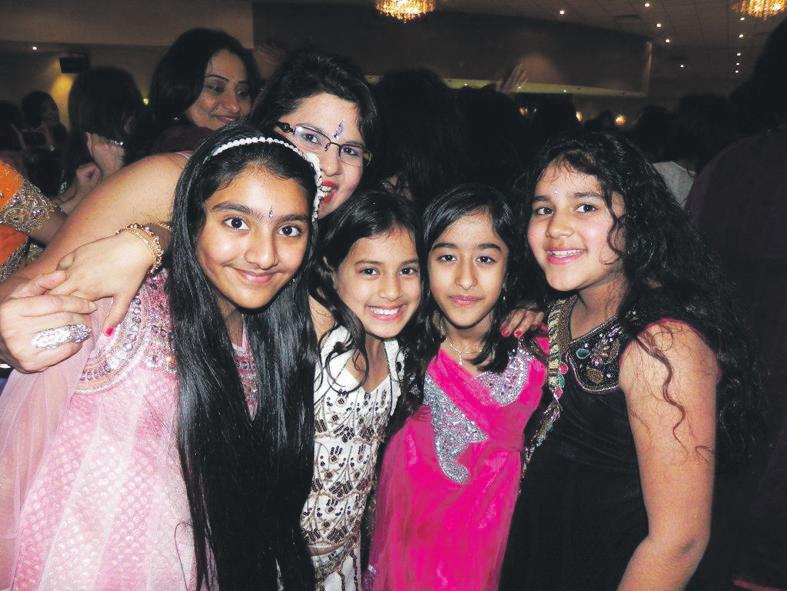


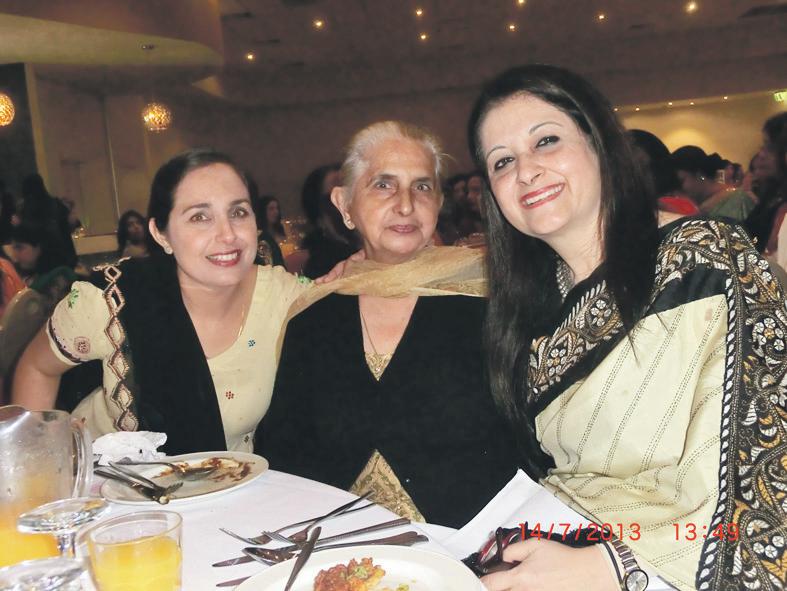



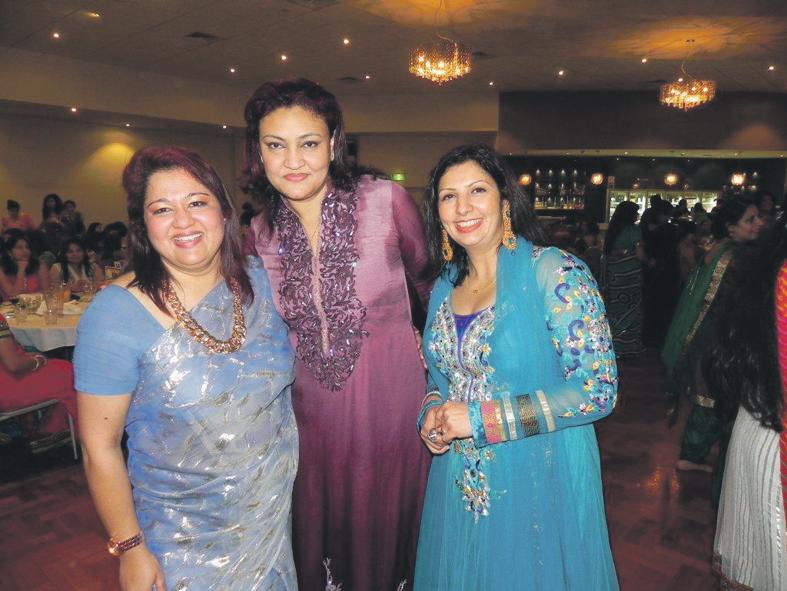

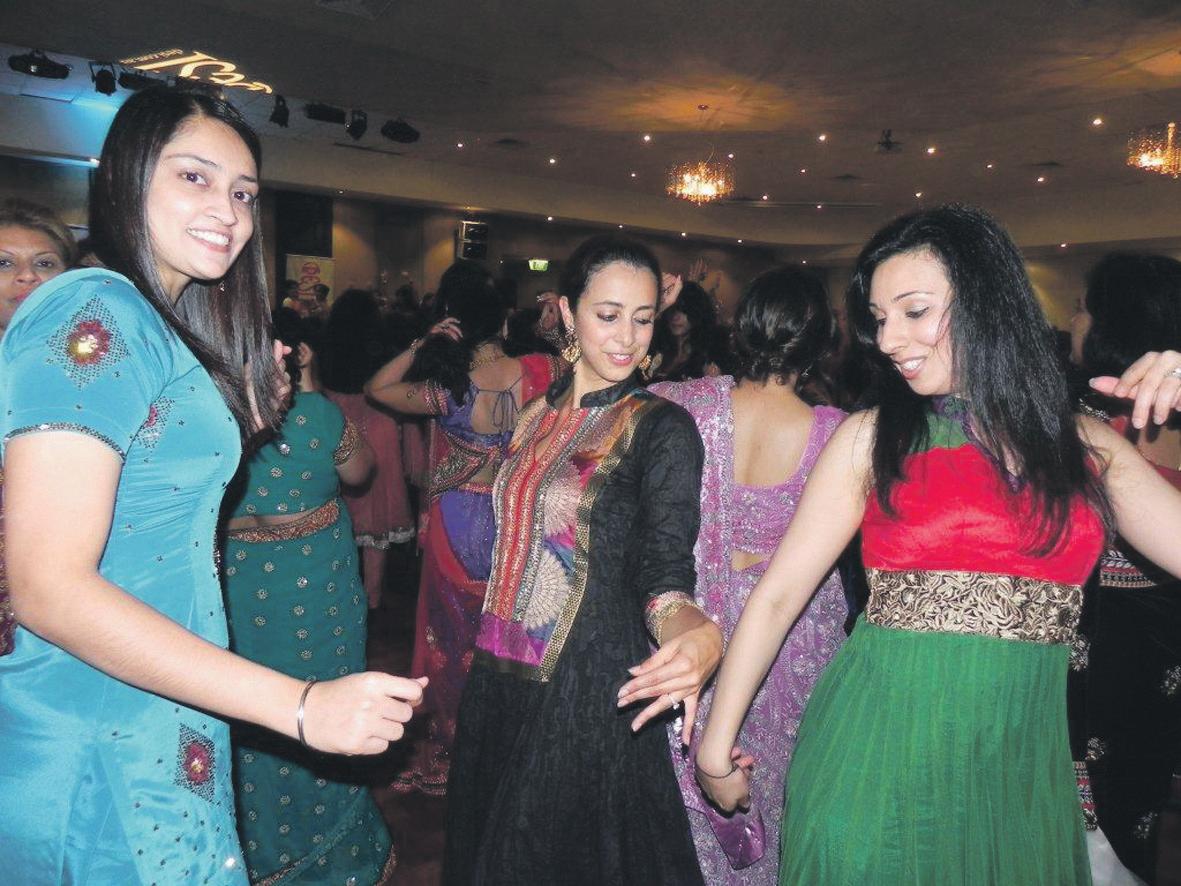



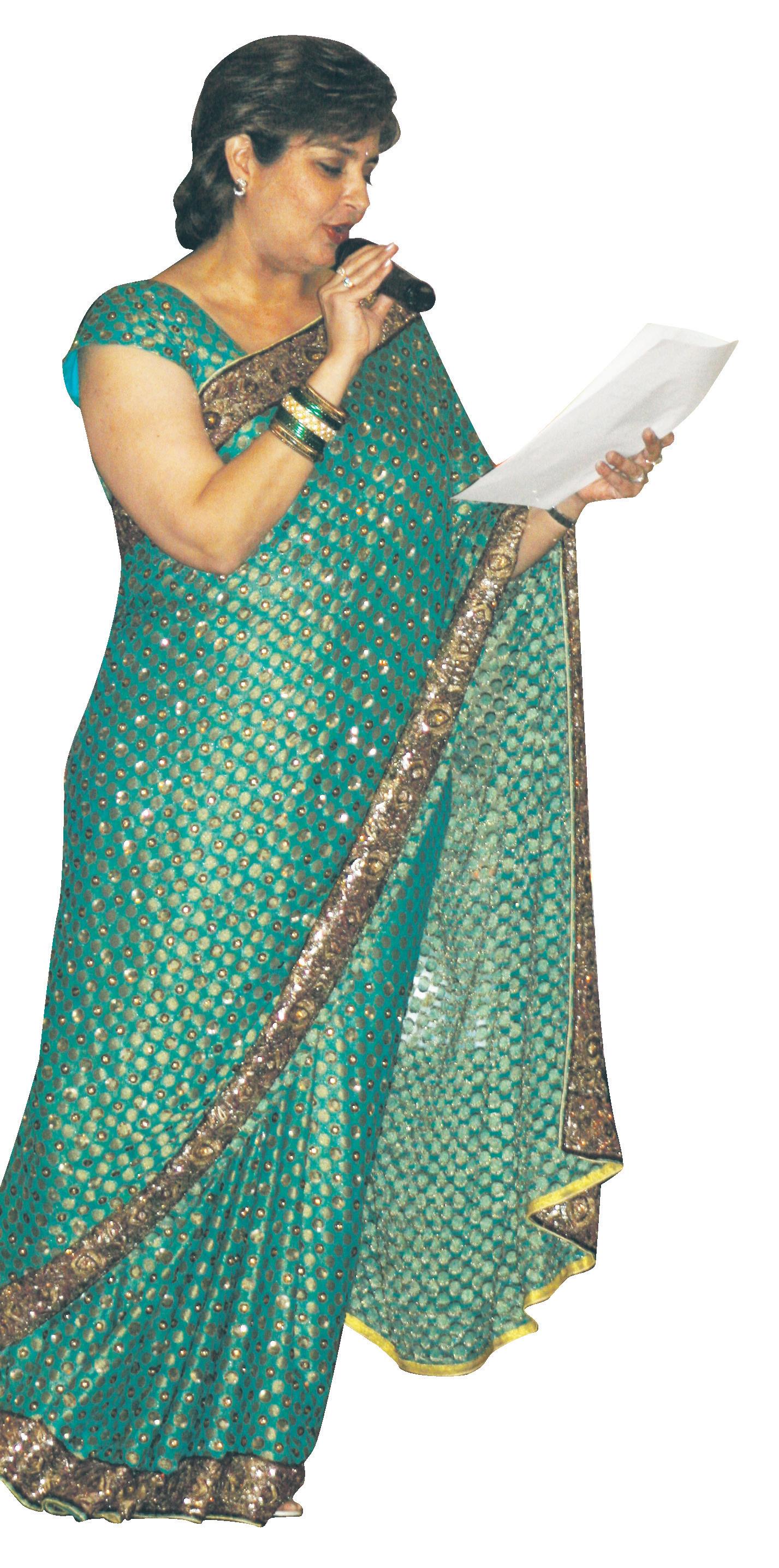
Pa R ty
see page 22
Story
Nach baliye!
Girls just wanna have fun! Sydney Sakhi Sangam celebrates 15th anniversary


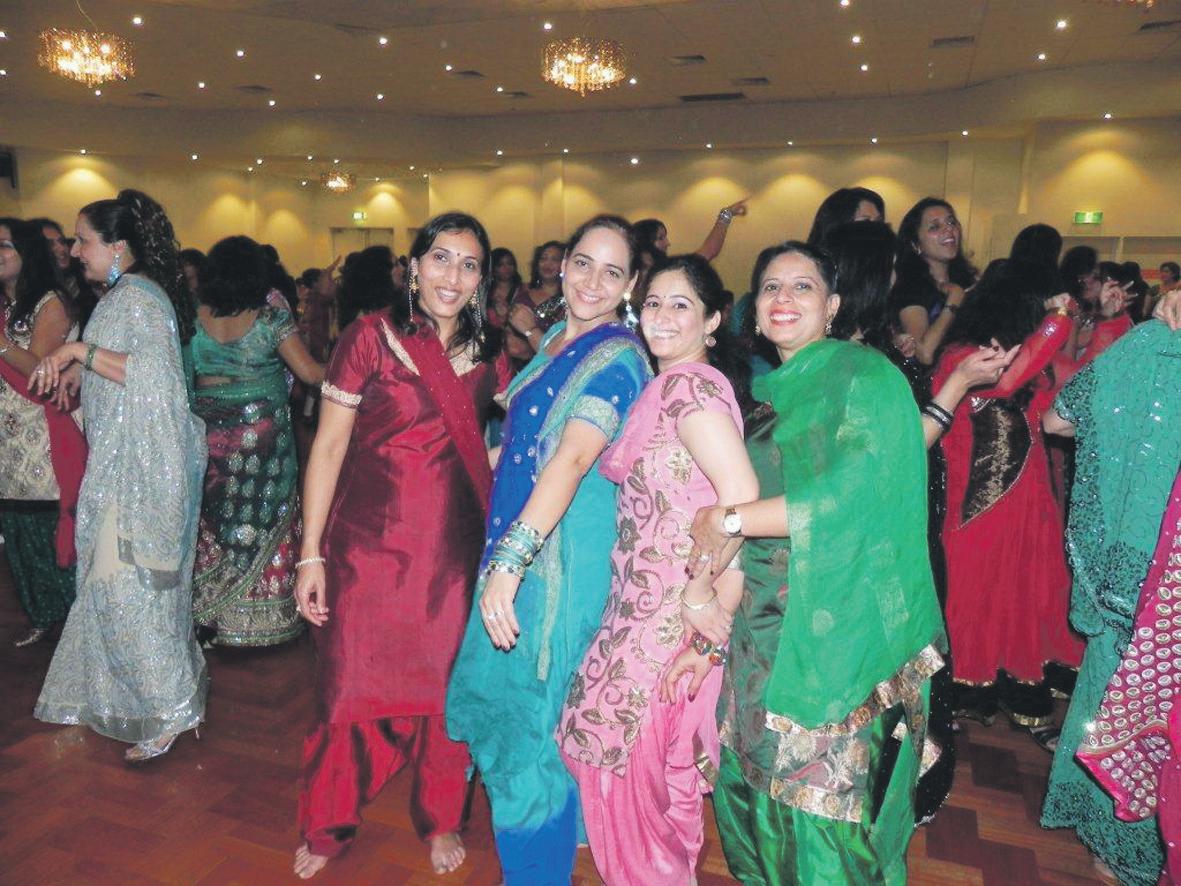


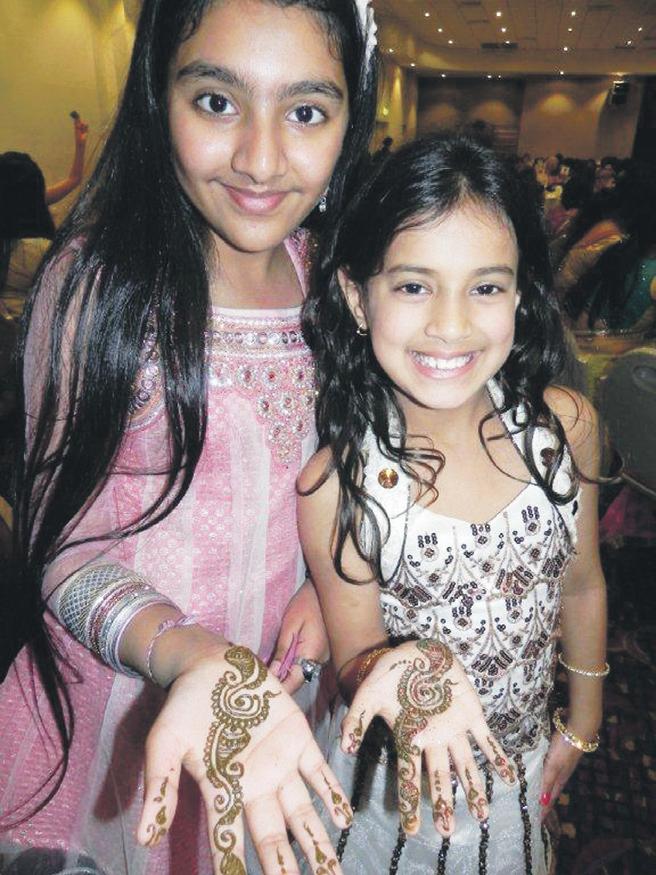



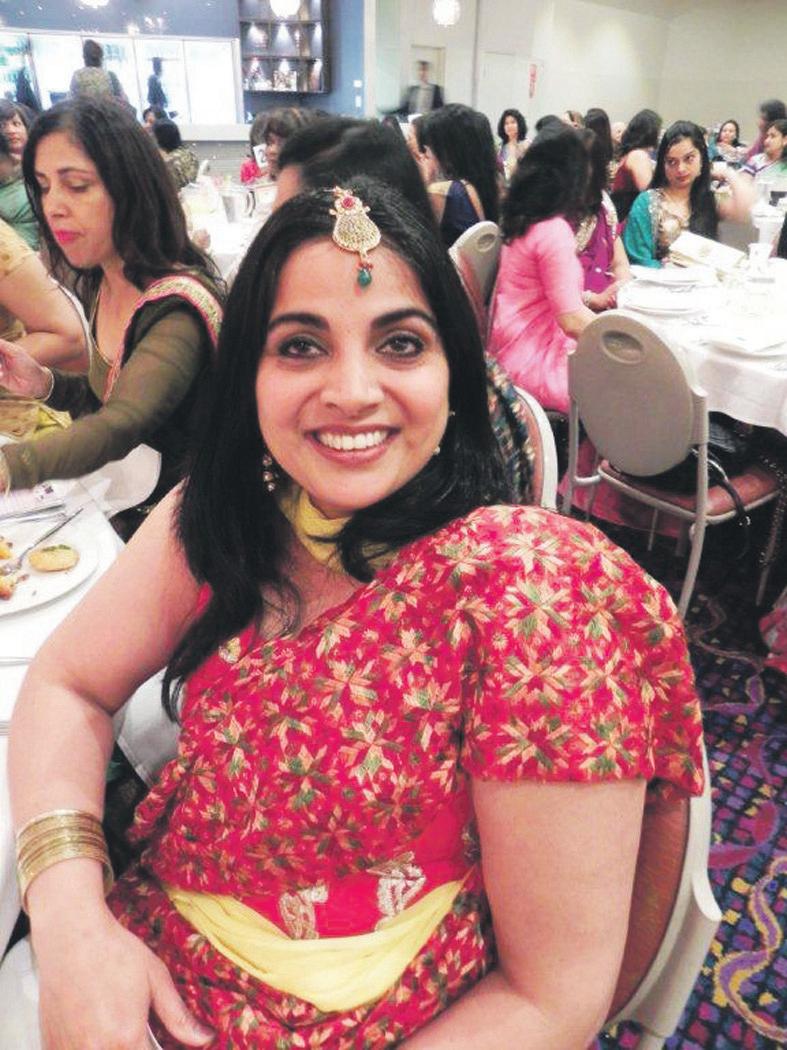
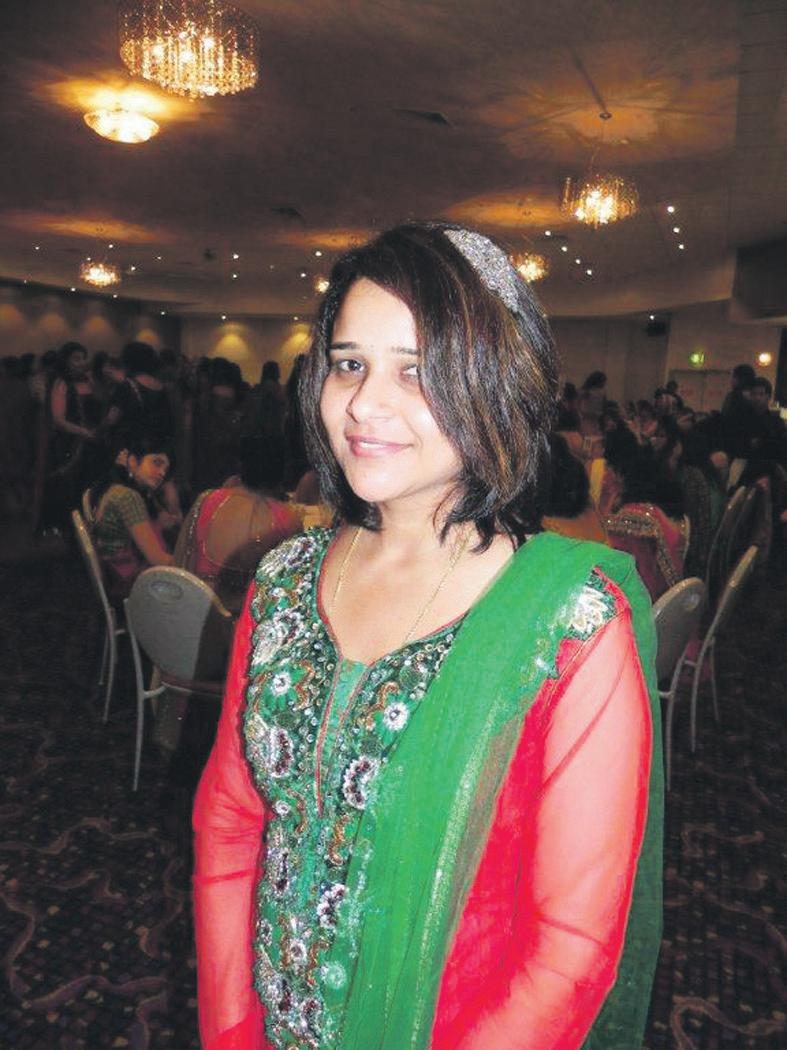


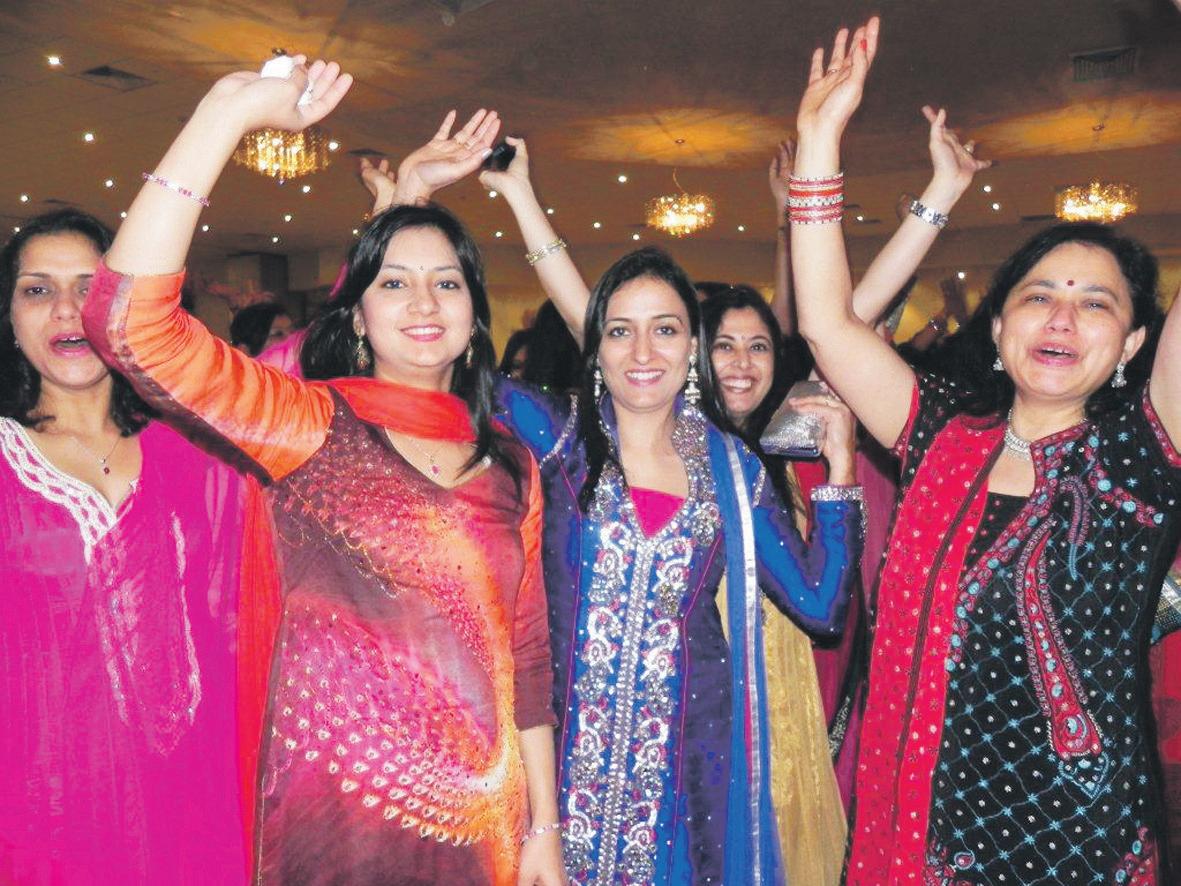 Photos: Dolly Singh Miranda and Rajni Anand Luthra
Photos: Dolly Singh Miranda and Rajni Anand Luthra
Japan embraces india
was staged in November 1943 in Tokyo, with Bose representing a Free India.
BY noeL g de soUZA
on May 30, Prime Minister Manmohan Singh of India made a lightning visit to Japan, to meet the Japanese Prime Minister Shinzo Abe. It was there that Abe made a very significant statement: he said that Japan would shift a large number of factories from China to India. This would obviously involve large-scale investments and technology the like of which India has never seen before.
Abe, in doing so, was not espousing a new concept but actually resurrecting an old one which lay at the basis of the Japanese southward push in Asia during the World War II.
The cultural links between Japan and India are not widely realised. The practical religion of Japan is Zen Buddhism, which can be best described as the distillate of Buddhist principles regarding meditation and concentration. When high level business executives get stressed with work, they often retire for a period into Zen monasteries so as to achieve tranquillity.

Japan today is on a sort of warpath because of the belligerency which China has shown in the seas of Southeast Asia
Japan today is on a sort of warpath because of the belligerency which China has shown in the seas of Southeast Asia. Having benefitted from large-scale investments and technology transfer from Japan, South Korea, Taiwan and the USA, China has now turned around and started dictating terms to its former benefactors.
While China gained from the technology transfer that Japan and the USA provided to setting up industries on Chinese soil, it developed an admirable range of military technology (including space and nuclear) on its own. The result is that China has emerged as a military superpower which rivals the world’s best, and which includes highly sophisticated weapons such as stealth bombers and drones.
During World War II, Japan created a string of puppet states under its hegemony. This included the Heads of State of several countries including Manchuria, China, Burma, The Philippines, Thailand and significantly, Azad Hind. Subhash Chandra Bose was recognised as the Head of the Provisional Government of Free India called ‘Arzi Hukumat-e-Azad Hind,’ better known as simply ‘Azad Hind’.
Large numbers of Japanese pilgrims visit Buddhist shrines in India. When I lived in Madhya Pradesh in the 1960s, trains used to stop at Sanchi to enable groups of Japanese pilgrims to visit the famous complex of Buddhist temples and highly decorated gates; this included the Great Stupa built in solid stone by Emperor Ashoka. The stupa is said to contain relics of the Buddha. In recent decades, main Buddhist centres in India like Bodh Gaya which has the gigantic Mahabodhi temple, have been renovated and modernised to provide up-todate facilities for pilgrims.
India, within the last forty years, has proven itself to be an industrious country which has shown its mettle in science and manufacturing. Japan’s collaboration in Indian industry is exemplified by the Suzuki-Maruti range of cars which is India’s best-selling vehicle (ten million have already been sold). The transfer of more Japanese industries to India can render a win-win situation for both countries.
Take the case of the manufacture of steel. By locating steel plants in India, the cost of transporting coal and iron ore from Australia will be dramatically reduced, as currently those raw materials are transported to Japan. India will be able to provide much lower labour costs as well as proven technical personnel.

The transport costs for the finished product will also be greatly reduced to markets in the Middle East and Europe on the one hand, and to Southeast Asia and Australasia on the other. This could dramatically reduce the price of steel in the world.
The transfer of more Japanese industries to India can render a winwin situation for both countries
At the time, the Azad Hind concept was popular in India which was impatient for independence, and as its leader, Bose was glorified as a national hero. This adoration of the INA continues to this day. However, Mahatma Gandhi was not in favour of the idea of the military liberating India, stating that he could not favour exchanging one form of slavery for another.
Japan was then parading itself not as an aggressor, but as the liberator of Asian colonies from their European and American masters. The Greater East Asia Conference
Such steel plants could be the focus of other, particularly metallurgical, industries which would gain from both reduced labour costs and savings with regard to transport to the Middle East, Europe, Southeast Asia and Australia.
The flowering of such ‘coprosperity’ between Japan and India is very tempting for both countries. India should however, tread carefully so that China is not antagonised. An Asian Peace Treaty is a possibility which must not be allowed to be missed because of the land and sea disputes which are casting clouds on several horizons. India must, in the meanwhile, increase its military strength with defence as its principal aim.
32 JULY (2) 2012 www.indianlink.com.au
o P inion
An Indo-Japanese alliance can cause a subtle, but significant change in the balance of power in Asia



JULY (2) 2012 33 NATIONAL EDITION Private or small group sessions email: warrawee14@gmail.com 0423 262 268 IeLtS 6+ bands Certified Examiner / Teacher Writing / Speaking We are looking for an Outbound Call Centre Agent, English-Hindi speaking, to join the professional multicultural team of an excellent, blue-chip Call Centre located in Frenchs Forest. Experience in outbound B2B and a background in IT or engineering essential! You will conduct and generate sales lead of well-known engineering software by phone. Call Catherine on 02 9518 4388 or email your CV to catherine@polyglot.com.au c all c ent R e t echnical s ales agent h in D i s P eaking – gR eat o PP o R tunity! WE ARE HIRING!
Let’s get our facts straight
Kevin Rudd’s solution to ‘stop the boats’ seems like a political ploy on the eve of the federal elections
that you or your children are not one of the thousands of others who have perished during the atrocities in your country. There is no end in sight to the violence, to the bloodshed and to the corruption. You are then offered the chance of a new life, of a new beginning for you and your family in Australia. It will cost you your life savings, and you know there is a chance none of you will make it there alive. You are even aware of the fact that asylum seekers are being sent to Papua New Guinea after landing on Australian shores. Would you make the tough call for your family?
BY RitAm mitRA
Before we say anything about asylum seekers, let’s first get rid of the stigma associated with the term. No, the term ‘asylum seeker’ does not mean illegal immigrant. No, it does not mean impoverished opportunist. And no, it most certainly does not mean terrorist threat. An asylum seeker is one who seeks refuge in a foreign country for fear of unwarranted persecution, or due to the threat of war or violence. It is not illegal to seek asylum.

Kevin Rudd recently announced his grand plans for keeping asylum seekers away from Australia - by sending them to Papua New Guinea for ‘processing’. Under the agreement, Australia will spend hundreds of millions of dollars sending asylum seekers to Manus Island or elsewhere in PNG, and in return, will spend heavily on PNG’s schools, universities, hospitals and law enforcement. It is the first big decision Rudd has made since his reinstatement, and will help quell Tony Abbott, the Federal Opposition Leader, who has over the last few months constantly crooned, ‘Stop the boats’.
Our anthem might insist that ‘for those who’ve come across the seas, we’ve boundless plains
to share’, but Rudd’s new policy appears to be more geared towards negating his opponent’s favourite one-liner than upholding the fabric of the nation. It is embarrassing that at the forefront of our nation’s politics lies a battle to keep those who have been exposed to horrific violence, away from our shores.
Rudd gave three reasons for his decision, focusing on controlling the people smugglers that traffic asylum seekers over to Australia, rather than the asylum seekers themselves.
Firstly, Rudd argued, Australian intelligence agencies advised him that the numbers of asylum seekers will continue to rise (as they will around the world) in the years ahead. Secondly, each vessel that arrives presents a continued risk of drowning. Finally, claims Rudd, people smugglers take advantage of human tragedy, as they are currently doing with Syrian asylum seekers, and that must be stopped.
Let’s deal with the first point, rising asylum seeker numbers in Australia.
An asylum seeker becomes a refugee when they are accepted as having sought asylum for an appropriate reason. In 2012, Australia had the 49th highest number of refugees in the world.

“Okay,” might an everyday Mr Abbott or Mr Carr respond indignantly, “but we have a small population”. Except that if you rank us by number of refugees per capita, we come in 62nd. “But we’re not rich enough,” would a
fiscally-stretched Rudd lament. Unfortunately for Mr Rudd, compared to our national wealth, we rank 87th in the total number of refugees we house. The Asylum Seeker Resource Centre also quietly adds that 23,000 persons leave their homes each day to seek protection elsewhere, almost as many as Australia receives in an entire year.
So even if numbers are on the increase, surely as a relatively wealthy nation with such a low population density, we can afford to offer a little bit of help to war-stricken single parents, families with young children, and other individuals who have left everything behind in the hope of an improved quality of life.
Rudd’s last two points are not entirely uninformed. The risk of drowning is definitely a prevalent one, with thousands having perished while attempting to reach our shores, due to overcrowded, poorly manufactured ships or perhaps an inability to swim. Similarly, people smugglers definitely do exploit the plight of unfortunate families. But there is an Australia-sized flaw in Rudd’s master plan here.
Let’s take a step back and put ourselves in the shoes of the asylum seekers. You live in a warravaged country. You have been de-sensitised to seeing mangled bodies in the streets, you’ve dealt with family members being killed in front of your eyes and you have been exposed to women and children being raped and beaten. You live every day in fear, hoping
Chances are, like those 23,000 other people around the world, you still would choose to flee. And there’s the problem: Rudd’s plan will not stop people smugglers nor drownings. It is a sad thought indeed that there are people who will exploit tragedy for personal gain, often with no regard for the safety of their ‘cargo’. But it will not stop because one, two, or 10 governments decide to send asylum seekers elsewhere. Seeking a safe, happy life has always been an ‘at all costs’ adventure.
Before we turn a blind eye to asylum seekers, we should remember that we could have just as easily been one of them. We were not entitled to a privileged life. We were born, by pure luck, into various states of wealth, happiness and good fortune. If you are reading this paper, you’re almost certainly one of the luckiest people in the world, if you’d just acknowledge it. We’ve never had to worry about a court that only rules in favour of the government. We’ve never had to fret over whether our sons or daughters will be safe at school. We don’t even have to worry about mouthing off the Prime Minster in public.
Aside from everything else, most of us would not be able to fathom the sheer terror of leaving our beloved countries behind in exchange for weeks on an overcrowded boat to an unknown land, watching fellow passengers drown, assuring our children that everything will be alright and then being treated like a prisoner and thrown into a detention centre on arrival.
Rudd can hardly be held completely accountable for this decision. Future generations will judge us, the public; because most leading politicians only ever act
Our anthem might insist that ‘for those who’ve come across the seas, we’ve boundless plains to share’, but Rudd’s new policy appears to be more geared towards negating his opponent’s favourite one-liner than upholding the fabric of the nation
on what they think might get them that extra vote. For too long, protectionist politicians and oneeyed media stations have clouded our view of asylum seekers with inadvertent and misleading claims of illegality, of security threats and of overpopulation. Of course, the border should be protected: national security is extremely important and we’d be silly to ignore it. But, as the Australian public we owe it to ourselves to work out whether we deserve a better life than other people around the world.
It might be too idyllic a hope that one day, we’ll show just a touch of empathy towards asylum seekers and that one day, the winning election slogan will not be something as insensitive as ‘stop the boats’. But it would be a good start if we began hoping.
34 JULY (2) 2012 www.indianlink.com.au
vie WP oint



JULY (2) 2012 35 NATIONAL EDITION
From Coogee to tilak nagar


Louise
sydney and melbourne
BY LenA PeACoCk
in a quest to explore the uncelebrated neighbourhoods of the world, Sydney-based photographer Louise Hawson visited 10 countries, 14 cities and 52 suburbs with her daughter Coco, all in just one year. Her photographs, almost entirely diptychs, are currently


being displayed as the exhibition 52 Suburbs Around the World at the Museum of Sydney, and present images of the ordinary suburbs of Australia, up against those of India.
“I’m motivated to explore the ‘unfamous’ side of a city by a child-like desire to be surprised and to make discoveries, rather than follow a well-worn trail where things have already been discovered a zillion times,” said Hawson.
“I want to observe real life, so venturing into neighbourhoods where there’s normal life going on is much more satisfying to me”.
Hawson’s quest to “capture the
beauty that exists in an apparently ordinary world” was ignited after her project 52 Suburbs of Sydney, where she explored the lesser known suburbs of her home town. This trip in turn was propelled by a bite from a white-tailed spider, which lead Hawson to change her career path to photojournalist.
Her trip around the world in 2012 included Hong Kong, New Dehli, Istanbul, Paris, Rome, Berlin, New York, Los Angeles, Tokyo, Kyoto, Auckland, Wellington, Melbourne and finished up in Sydney.



“Yes, they’re all famous ‘over-
photographed’ cities; [but] my mission is to paint a more imaginative, intimate picture of them than you normally see,” she said at the start of her trip on her blog (www.52suburbs.com).
Hawson’s aim was to, “ignore the postcard clichés and focus instead on finding ‘ordinary’ beauty in the places where ‘ordinary’ people live”. This can be seen in the exhibition, which presents 100 (of the 30,000 photographs taken on her trip), simply displayed on fine art raag paper. Eight vibrant photographic prints of New Dehli, and seven of Melbourne
and Sydney are included as part of the exhibition, which explores the differences between countries and cultures, as well as the remarkable similarities.
This effective presentation of 52 Suburbs Around the World, presented by Sydney Living Museums, allows the photographs to speak for themselves and are split up into cities. More images can be seen in the slide show that is part of the exhibition, as well as on her blog.

Hawson enjoys using diptychs, which are two images presented side by side (presented with a caption) because they are “a playful

36 JULY (2) 2012 www.indianlink.com.au aRts
Hawson’s vivid photographic exhibition 52 Suburbs Around the World goes beyond cultural clichés to explore the “real” side of suburbs including India and Australia
way of presenting images that allows me to make connections between seemingly unrelated things and to tell ‘mini stories,’” she said. “I often juxtapose people with the built environment, making a connection through a shared texture, colour or shape – anything that unites the images and creates a new meaning”.



Interesting points can be made from the photographs of Indian Australians living in Melbourne and those in the New Delhi images. “What I also keep being surprised by is that as abysmal as the built and natural environments can be, there is so much beauty in the people, the saris, the temples and the street food,” said Hawson of her time in India. “And in the case of Lajpat Nagar, the art may fade quickly, but will leave an indelible

new d
mark on me forevermore”.
Director of Sydney Living Museums Kate Clark said in her exhibition opening speech that the exhibition displays an “extraordinary mixture of cultures”. It also shows Hawson’s interest in the cultures found in Australia compared to the original cultures that they derive from overseas. Her celebration of the beauty of the ordinary suburbs goes beyond the usual cultural clichés found on postcards and forces the viewer to suspend any preconceived notions.
Although the “world is an imperfect place, when you spend a

year walking the streets… you find beauty in unexpected places… find hope, and joy that exists, despite the many problems” Hawson said to Indian Link 52 Suburbs Around the World allows the viewer to explore these lesser known neighbourhoods of the world’s famous cities, and join in with their inhabitant’s daily rituals. “Explore + photograph + share = my idea of a good time,” said Hawson, which sums up her exhibition.
20 July – 24 November Museum of Sydney open daily 10am – 5pm 52suburbs.com
Hawson’s trip around the globe


“I’m motivated to explore the ‘unfamous’ side of a city by a child-like desire to be surprised and to make discoveries, rather than follow a well-worn trail where things have already been discovered a zillion times”

JULY (2) 2012 37 NATIONAL EDITION
Louise Hawson
All photos: Copyright of Louise Hawson

38 JULY (2) 2012 www.indianlink.com.au
A Sydney tribute to Vivekananda
The man-making message of a Hindu spiritual leader comes alive on his 150 birth anniversary
You have to grow from the inside out. None can teach you, none can make you spiritual. There is no other teacher but your own soul.
Condemn none: if you can stretch out a helping hand, do so. If you cannot, fold your hands, bless your brothers, and let them go their own way.
Knowledge is inherent in man. No knowledge comes from outside: it is all inside. What we say a man “knows,” should, in strict psychological language, be what he “discovers” or “unveils”; what man “learns” is really what he discovers by taking the cover off his own soul, which is a mine of infinite knowledge.
All who have actually attained any real religious experience never wrangle over the form in which the different religions are expressed. They know that the soul of all religions is the same and so they have no quarrel with anybody just because he or she does not speak in the same tongue.
Are you unselfish? That is the question. If you are, you will be perfect without reading a single religious book, without going into a single church or temple. Religion has no business to formulate social laws and insist on the difference between beings, because its aim and end is to obliterate all such fictions and monstrosities.
The Swami preached the ideal of a strength-giving and man-making religion; the concept that it was better to teach a man to fish, than to feed him fish
of women and so-called low-castes. He saw Hinduism for what it was.
“No religion on earth preaches the dignity of humanity in such a lofty strain as Hinduism, and no religion on earth treads upon the necks of the poor and the low in such a fashion as Hinduism,” he said. “It is an insult to a starving people to offer them religion; it is an insult to a starving man to teach him metaphysics”.
What Swami Vivekananda wished for was to awaken the belief in oneself and be the master of one’s own fate. “The old religions said that he was an atheist who did not believe in God. The new religion says that he is an atheist who does not believe in himself”.
BY JYoti sHAnkAR

it was a time when the first stirrings of independence had been asserted from 1857 against British rule, and Indian intellectuals were questioning religious practices steeped in meaningless rituals and social ills such as sati and casteism. This little precocious boy, fondly called Naren, had an enquiring mind. Born of affluent parents, he had the best education and was a keen student of Western philosophy and history. It was from an English professor that Naren first learned of Sri Ramakrishna and sought him out to get an answer that had plagued him for a long time.
“Have you seen God?” he asked. “Yes, I have. I see Him as clearly as I see you, only in a more intense sense,” was Sri Ramakrishna’s answer.
It was not something the rational Naren accepted immediately, but nevertheless he was drawn to this spiritual man.
More meetings and many questions later, Naren was well and truly on his journey to spirituality, and joined the monastic order. Before long, as he wandered throughout India, he became known as Swami Vivekananda, a name bestowed upon him by the Maharaja of Khetri. His teachings and influence spread far and wide over India and many Western countries.
At the young age of 39, however, Swami Vivekananda passed away and left behind a rich legacy of deep understanding of the true meaning of life and religion, inspiring many thinkers including Mahatma Gandhi, Leo Tolstoy, Rabindranath Tagore, Romain Rolland and JD Salinger.
To mark the 150th anniversary of Swami Vivekananda’s birth, various Hindu organisations such as the Hindu Council of Australia (HCA), Hindu Swayamsevak Sangh (HSS) and Friends of
India (FOI) have jointly formed the Vivekananda 150 Committee Australia.
The official launch of the year of celebrations was conducted on July 14 with an address by Swami Sunishtananda of the Vedanta Society, Sydney. He spoke about the role Swami Vivekananda played in revitalising Indian society. India was truly a civilisation at the pinnacle of achievement in Vedic times but had since fallen into degradation, a period also marked by successive invasions by other countries. Swami Vivekananda tried to understand the cause of this in his travels around India, and concluded that the real path to spirituality was not in mindless rituals, but serving mankind.
The Swami preached the ideal of a strength-giving and man-making religion; the concept that it was better to teach a man to fish, than to feed him fish. His teachings tried to synthesise the humanism and scientific enquiry of the Western world with the knowledge of Hindu scriptures, in the process creating a bridge across cultures
for both Indians and people of the Western world, each being more enriched. Swami Vivekananda left behind four outstanding treatises on Hindu philosophy, Jnana-Yoga, Bhakti-Yoga, Karma-Yoga and Raja-Yoga.
At the first World Parliament of Religions held in Chicago in 1893, Swami Vivekananda’s speech that began with the words, “Sisters and brothers of America” was greeted with a rousing welcome. He was not an official delegate, and had managed to reach there in extraordinary circumstances. However, he soon became a star delegate with invitations to speak in many cities and countries. He recognised that all religions are paths to the same destination, and so no path is truer than another. It is up to each one of us to choose and follow the path that attracts us.

Swami Vivekananda not only wanted to awaken India to its own glory, but also take the advantage of the progress in technology and science, to better the lives of humans. He was saddened by the condition of the masses, treatment
A strong advocate of physical fitness and caring for the body as a temple, it is believed he once said that it was better to play football than to read the Gita! A recent book by renowned Bengali writer Shankar, The Monk as Man, lists insomnia, liver and kidney diseases, malaria, migraine, diabetes and heart ailments as a few of the health problems from which the Swami suffered. On 4 July 1902, he passed away. “This life is short, the vanities of the world are transient, but they alone live who live for others, the rest are more dead than alive,” Swami Vivekananda said.
These profound teachings are everlasting and to spread the message to the wider world once again, playwright Alex Broun will be staging a play based on the extraordinary life of this extraordinary man called Swami Vivekananda. Entitled Oneness: Voice Without Form, the play will be staged on September 17 and 18 at the Sydney Opera House, and also at Brisbane, Adelaide and Perth. The play, with a cast of Indian and Australian actors, aims to bring the essence of the Swami to life and introduce him to people who do not know about him. The manmaking message of Vivekananda will hopefully continue to inspire many generations to come.
JULY (2) 2012 39 NATIONAL EDITION
s P i R ituality
A koan for a happy life
situation
BY sARoJA sRiniVAsAn

A‘ koan’ is defined as a paradox to be meditated upon that is used to train Zen Buddhist monks to abandon ultimate dependence on reason, and to force them into gaining sudden intuitive enlightenment.
In everyday life we may not actively seek spiritual enlightenment, but we certainly need ideas and strategies to get through an impasse, when we feel ‘stuck’. Every situation that produces uneasiness and conflict within our minds needs attention within a framework that will help reduce this uneasiness. At such times we need to ask ourselves, “What is my expectation of this situation?”; “What limitations do myself and others involved have?”; “I need to accept limitations however unacceptable they are, by limiting my expectations”.
To maintain peace within oneself, regardless of whatever the situation may be, applying a simple koan of three inter-related words summarises the direction we may need to take. At a point when things are at a standstill, our thinking has to change if we have to progress.

These three words are: Expectations, Limitations and Acceptance - accept limitations; limit expectations; expect the unacceptable.
Acceptance
This word seems to appear in our thoughts in a negative way – passive, giving in, inaction, failure, dejection, long suffering, uncomplaining, compromise and a sense of hopelessness. Yet, whatever situation we find ourselves in, the undeniable fact is that we are already there. Often we are unable to retract immediately, or may not be able to even in the future. We act within the ‘given’ of that moment, maybe through outward actions like impulsively saying something rude, acting in a hostile manner, or privately thinking of someone’s action in a negative way
and later finding it to be wrong. At such times, the only avenue to move forward is to start at that point. This requires taking stock of everything instantaneously, and accepting the given of that moment. For example, being in a situation that has become difficult many years after a decision was made and finding it intolerable at present, one may not be accepting of it and go back to delving into the past, often ruminating ‘if only…’, ‘maybe…’ which is totally fruitless, and in fact only increases present frustration.
In relationship conflicts, many find that even after repeated requests for others to change, or even after being verbally harsh, they do not even make an effort. The only solution would be to accept the person as they are, and not how you would like them to be. Accept, keep cool and move on.
Limitations
In an ideal world we do not have any limitations – mentally the capacity of our brain and mind is so vast and untapped that anything is possible within the confines of one’s mind. The common saying, ‘the sky is the limit’ cannot always be applied to everything. On a practical level, limitations abound. From the trivial to the most profound, life constantly throws at us circumstances that are totally beyond one’s choice or volition.
The limitations that confront us may be financial, physical or geographical. We may lose our capacity to earn an income or as we age, we cannot do many things as well or as fast as we did earlier. These are limitations; we can win
over some, but not others. Such limitations may be present for others with whom we live or work.
Repeatedly we try to overcome limitations that are beyond changing, and feel frustrated. We may be aware of alternatives for some of these issues, but we are unwilling to accept them. We constantly keep moving the goalpost, wanting better things or have a fanciful hope that somehow things will change despite the odds against us. We have limitations and so do others, and we need to accept them.
Expectations
We all have expectations, some appropriate and some not; some realistic, others fanciful. People will often say they do not have any expectations – it’s not true. We do have expectations, either of ourselves or others. More often than not it is in our expectations of others that our disappointments arise. For perfectionists, it is their expectation of themselves that creates problems.

We expect most people to behave responsibly, respectfully or with understanding. Others expect the same of us. Sometimes these expectations come from social conditioning within our own subcultures that have become ingrained, a right to be demanded. This is where problems arise. Many expectations that were appropriate earlier in different circumstances, may not be appropriate now. For example, the roles within the family in a changing world may be completely different to what they were when one was growing up.
Even if some of these

expectations seem unreasonable, we continue to hold onto them. Perfectionists expect themselves and others around them to be perfect in everything all the time. Surely this is almost impossible, for many things have several unknown limitations of which we may not even be aware. The sense of disappointment and frustration when unreasonable expectations are not met, is indeed profound. In a positive sense, high personal expectations can motivate people to make concerted efforts and persevere to achieve great heights, but when they are unreasonable they completely backfire and can be distressing.
We need to limit expectations of ourselves and others; accept limitations and sometimes, expect that unacceptable things will happen.
Somehow applying this koan to any situation, however trivial, allows one to navigate through the journey of life, enjoying calm seas and riding through everyday storms.
40 JULY (2) 2012 www.indianlink.com.au
P syche
From the trivial to the most profound, life constantly throws at us circumstances that are totally beyond one’s choice or volition
A simple strategy to cope with those times in life when we are stuck in a seemingly hopeless
edu-kingdom College would like to congratulate all of our students who participated in the Selective School Examination. We would also like to thank all of our parents for being so supportive and encouraging. edu-kingdom students have proven another year of fantastic results! Congratulations!

2013 ekc’s new teRm program


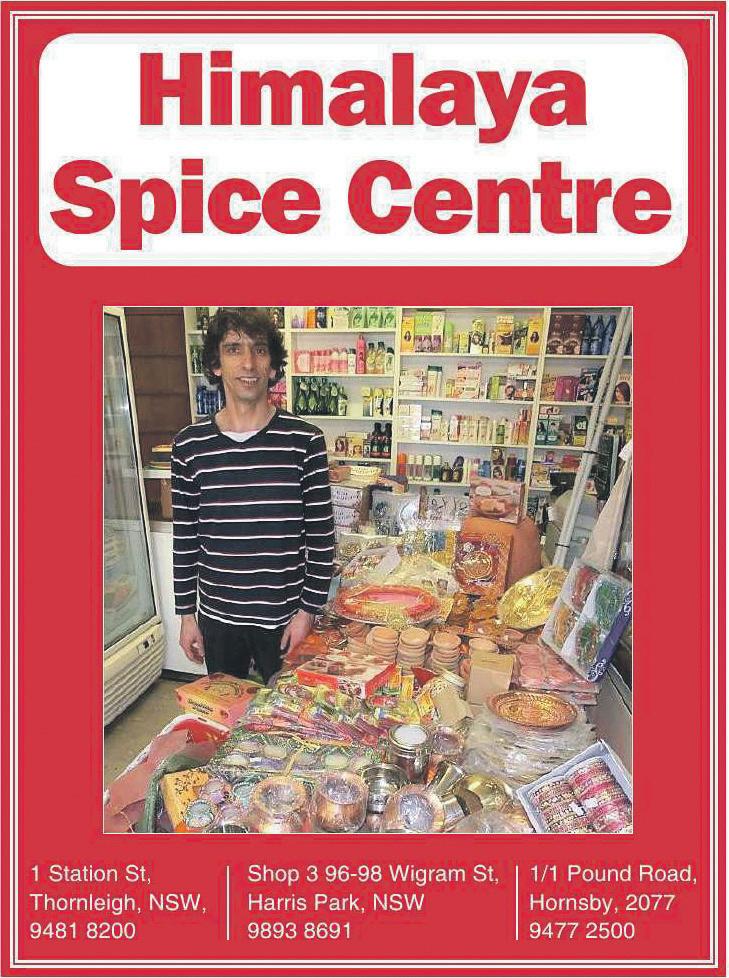
JULY (2) 2012 41 NATIONAL EDITION 09 8774 6160 Hallam Wantirna 03 9800 3988 Campsie 02 9789 3962
CONGRATULATIONS!
Mozart magic inVienna
A historic city that abounds with memories of the legendary maestro

Amusical note welcomes us from the moment we enter the Hall of Mirrors inside Schoenbrunn Palace in Vienna.

It is from Mozart’s unforgettable creation Symphony no 40, played because it was in this particular room in 1762, that the six-yearold prodigy presented his first concert for Hapsburg Empress Maria Theresa. His legendary performance soon became the talk of the town and laid the foundations of his comet-like rise to fame.
This is one of many legendary tales that visitors encounter when visiting Vienna, the capital city of Austria, also touted as the ‘City of Music’. There is literary music in its very air, gifted by geniuses such as Hayden, Beethoven, Schubert and Strauss, all of whom at some point in their life lived, composed and played in this imperial city.
However, Wolfgang Amadeus Mozart appears to dominate the scene. There are several sites in the city which are deeply associated with the maestro, and by visiting them you not only come closer to Mozart, but also capture most Viennese attractions.
The Schoenbrunn Palace was a very special place for the whiz kid, because it was from this location that the Salzburg-born composer not only began his rapport with the royals, but also commenced a life-long empathy with Vienna. This baroque palace, now a UNESCO cultural heritage site, was built in 1642 as the former summer residence of the powerful Habsburg dynasty. The rooms shown to the public are mostly decorated in Rococo style, with its walls and ceilings covered with white-lacquered surfaces ornamented with gold leaves. The Bohemian crystal chandeliers, white porcelain tile stoves, Indian and Persian miniatures and other eye-catching fittings and furnishings garnishing each of the 1400-odd chambers, simply proclaim the opulence of the rulers and their taste for art and culture.
Mozart, at the age of twelve, again performed for Empress

Maria who is regarded in Austria as the ‘mother of the nation,’ at the opulent Hofburg Palace, the Hapsburg’s winter residence in the heart of city. The vastness of this royal complex comprising of imperial apartments, museums, libraries, riding schools and churches, exhibits architectural development from Gothic to late 19th century styles, and is captivating. It is said that during the later reign of Emperor Joseph II when Mozart was living permanently in Vienna, he was a regular guest at this quarter. In commemoration of his long association with the royals, a statue of Mozart was erected in 1896, in the adjacent royal garden.
Mozart was born in 1756 in nearby Salzburg where he lived till 1781, before permanently moving to Vienna to pursue his career as a freelance musician and composer. One iconic site that intimately shares his life is the Stephansdom, the majestic cathedral revered as Vienna’s soul. It is here that Mozart married in 1782, his children were baptised, and after his untimely death in 1791, his body was blessed in the chapel within.
Mozart resided at various addresses in Vienna, but none of the buildings exist except the one at Domgasses 5, where he occupied the first floor apartment between 1784-and 1787. While living there he composed one of his most memorable operas, ‘The Marriage of Figaro’. Today, all floors of the building have been converted to a museum called the Mozarthaus Vienna. A shrine for his fans, the exhibits comprising of documents, pictures and memorabilia, provide comprehensive information not only about the composer Mozart, but also around him as a family man. While sensing the aura that surrounded this famous man, visitors also gather a good understanding about the cityscape and the lifestyle during his time.
It is interesting to note that while living in Vienna, Mozart began to organise his own concerts at various venues, inviting subscriptions from Viennese nobles of the time.
It started very well; in 1784 his concert was sold out, but three years later seats were empty. He started performing at local
42 JULY (2) 2013 www.indianlink.com.au
travel
SANDIP HOR
cafes and one from the time, Cafe Frauenhuber, still exists. It is close to the site at Rauhensteingasse 8, where he lived his last years until passing away in 1791. The original house in which Mozart began framing his unfinished piece Requiem, has made way for a modern department store, Kaufhaus, but the site hasn’t lost its moving significance. Large crowds still gather at the site and while waiting in silence, one can surely visualise the maestro playing his violin or piano inside an imaginary building. Mournfully they walk along the street along which the maestro’s funeral procession headed towards St Marx Cemetery, Mozart’s final resting place. Some extend their journey to St Michael Church where his resurrection service was held, and the story goes that Requiem was first heard during
that function.
Unfortunately Mozart didn’t have the opportunity to play at the State Opera House, one of the world’s most esteemed venues for musical soirees, as it was completed in 1869. However, no regrets for Mozart, as this grand auditorium opened with the performance of his famous Don Giovanni and recitals of several of his immortal compositions are regularly played there to mesmerise visitors. It is one of the best ways in which to end your odyssey to this musicloving city.
Clockwise from bottom left Mozart concert at Vienna State Opera
Inside Vienna Opera House

Mozart concert ticket seller

Schonbrunn Palace

Cafe Mozart
Mozart statue
A sculpture inside the palace gardens


The legacy of the maestro extends to chocolate

Another way of getting around

are touted throughout the city by people dressed in period costumes. It doesn’t matter if you are not a connoisseur of classical music; an entry inside the large concert hall of the Opera House is a lifetime experience. Like me, you will be stunned by its lavish interior decorations that speak only of unmatched opulence.
Patrons dressed in their best evening wear, performers on stage in historical costumes and traditional wigs, and the sound of music from their ensemble of violins, pianos and cellos, enshrines

the entire audience in a magical atmosphere.
Something interesting happens to me when Symphony no 40 is played. It reminds me of a popular Hindi film song, Itna na mujhse tu pyar karo by Talat Mahmmod and Lata Mangeshkar from 1961, from the Bollwood blockbuster Chayya. The tunes appear to be almost the same. Through later research, I find that music director Salil Chowdhury was so inspired by Symphony no 40 that he skilfully introduced the melody in his song for the film, thus making both Mozart and the song memorable forever among lovers of music.
Travel noTebook
VIENNA

GETTING T h E r E
Fly Singapore Airlines (www.singaporeair.com) via Singapore direct to Frankfurt or Munich, from where Vienna is well connected by train (www.raileurope.co.in). The trains in Europe are very comfortable and the journey provides a spectacular acquaintance with European countryside.
accommodaTI o N
Ring Hotel (www.theringhotel.com) at Ringstrasse is located close to the city’s iconic sites

b E s T TI m E To v I s IT
July to October
mor E IN formaTI o N
www.vienna.info
JULY (2) 2013 43 NATIONAL EDITION
King Khan on the Chennai Express

Padukone has tried an OTT role and accent in the film. With all due respects, according to critics OTT is your forte, how did it feel to share that space with Deepika?
BY PREEtI ABBAl
On August 8, a fun train journey will traverse the length and breadth of Australia with the release of Rohit Shetty’s latest rom-com Chennai Express. Fasttracking us to the movie’s fun and entertainment was none other than superstar Shahrukh Khan, SRK or King Khan or the Badshah of Bollywood, as he is popularly called, who worked his charismatic charm on me in an exclusive radio interview with Indian Link. We talked about his life, his beautiful co-star Deepika Padukone and the Chennai Express journey.
Appealing both to the classes and the masses, SRK is renowned for his Midas touch, turning every venture into a blockbuster. Will the King retain his magic with his latest release, Chennai Express? Will the racy songs, dollops of comedy and Rohit Shetty ishtyle action, generate enough speed to reach the platform of success? It won’t be long before we find out. As the title song in this movie goes, Ticket khareed ke, baith ja seat pe, nikal na jaaye kahin Chennai Express!
journey with the charming SRK.
Preeti Jabbal (PJ): As a star, you have been interviewed multiple times over; to what kind of journalist do you enjoy speaking - the gushing type who swoon on looking at you or the calm, collected variety that ask boring or repetitive questions, or those unaffected by your stardom who command candid responses?

Shahrukh Khan (SRK): People come to me with a lot of preparation or with preconceived notions, some come with love while others come just to do a job. Being an actor I can gauge in a moment or two what kind of person I am speaking to, and I try to respond in the same manner. If they are aggressive or demand candid responses, I try to give them candid responses; if they are the boring variety, I try to add a bit of interest; if they are gushing, I love them back. There are days when I get a good interview and it feels nice, however mostly I do not have a choice. Given a choice I would like to talk to people who are pleasant and have pertinent questions to ask, and who are ready to have a few laughs in between.
PJ: Well then we hope to cover all the above with this interview It’s breaking news that you have patched up with Salman Khan after 5 years, how does that feel?
SRK: My personal relationships whether they are with Salman or anyone else are a topic that I like to give an equal amount of dignity to. I have never made a comment on my love, fights, friendships or relationships, as I prefer to keep my personal feelings to myself most of the time. They still end up being a topic for tabloid analysis and then there are pictures and speculations, and people have different opinions
made any comment about my feelings on any sequence of events related to Salman up until now and I would like to keep it like that.
PJ: Let’s talk about your upcoming film Chennai Express, slated to release in Australia on August 8, and all your fans are looking forward to this movie. The current trend in Indian cinema is to include at least one element or a bit of masala that will appeal to the overseas audience. Is there this element in Chennai Express?
SRK: I don’t think that the thought process while making a film or telling a story is about combining elements to make a certain segment of audience happy. It is an over-simplification of how we make films. In reality, everyone is there mainly to tell a story. Some films could be geared towards certain people but emotions are universal and the idea is to appeal to everyone. I don’t know of anyone that makes a film to cater specifically to a national or international market.
Similarly Chennai Express is a holiday entertainer that the entire family can enjoy. It does not have any dirty dancing or cheap humour or embarrassing scenes; instead it is naughty, a bit over the top, funny, action-oriented and romantic.
Chennai Express is one of the first few Hindi films that will take the audience to all parts of South India. The film was shot in many locations around South and I am sure our South Indian audience all over the world will be a little bit attached to the film. Those who have not visited South India will also enjoy its beauty through this film.
PJ: Speaking of ‘over the top’, we have heard that Deepika
SRK: (Laughing) First of all I would like to know who says that she was OTT in this film? On a serious note, I think moviemakers create a special world of their own through their films. Directors like Karan Johar, Anurag Kashyap, for example, have their own creative world; similarly Rohit Shetty also has a distinct branded style of his own. If actors who act in Rohit’s films try to impose their personal choices and styles it would be most boring and unprofessional. There will always be people who will like or dislike a film and critical appraisal is mostly a person’s own perspective, not necessarily that of the director. It has to be taken with a grain of salt.
As for sharing space with Deepika, it was a great experience as she is a lovely lady, a fantastic actor and a friend. She even made pulling faces and comedy into something beautiful and sensuous. She is a very attractive and talented co-actor.
PJ: You have requested that Deepika’s name should appear in the credits of Chennai Express before your own. Will this gesture be a step towards improving the status of women in Indian cinema, or the country in general?
SRK: I would be a fool to think that this gesture will change the status of women in India. It’s a long overdue gesture to acknowledge the equality of genders within Indian films. Previously there have been trends where names were credited according to alphabetical order or based on seniority; however this is probably the first time that the female lead’s name will appear before the male. My production and I think it is very cool to do this as it has not been done before and it also creates certain awareness among people to change existing systems.

As for changing the world, I have worked in many films over the years and I don’t think any film has changed the world. On the contrary, the two hours are aimed for people to forget the world they live in. I believe films are a reflection of what society is, and you can’t really be changing that around. I think my request to have Deepika’s name first is just a nice gesture, and nothing more or less than that.
As for sharing space with Deepika, it was a great experience as she is a lovely lady, a fantastic actor and a friend. She even made pulling faces and comedy into something beautiful and sensuous
Chennai Express is a holiday entertainer that the entire family can enjoy. It does not have any dirty dancing or cheap humour or embarrassing scenes; instead it is naughty, a bit over the top, funny, action-oriented and romantic
PJ: Congratulations, you overtook Amitabh Bachchan and Sachin Tendulkar in being voted as the most popular Father of the Year 2013, in India. In Australia, Father’s Day will be celebrated on September 1 and Indian Link is holding a competition, seeking contributions from our readers. Now that you are officially an authority on fatherhood, would you like to make a comment?
SRK: Thanks for the complement, it’s nice to think that one is an authority on fatherhood. I believe fathers and mothers are beautiful people, so keep on loving them and listening to them. No matter what age or stage you are at, make sure that you somehow share the love with them that they shared with you while you were growing up.
I request all Indian Link readers to send in their contributions and nominations for this special Father’s Day competition. Have a good life!
44 JULY (2) 2013 www.indianlink.com.au
interview
Shahrukh Khan speaks exclusively to Indian Link Radio listeners


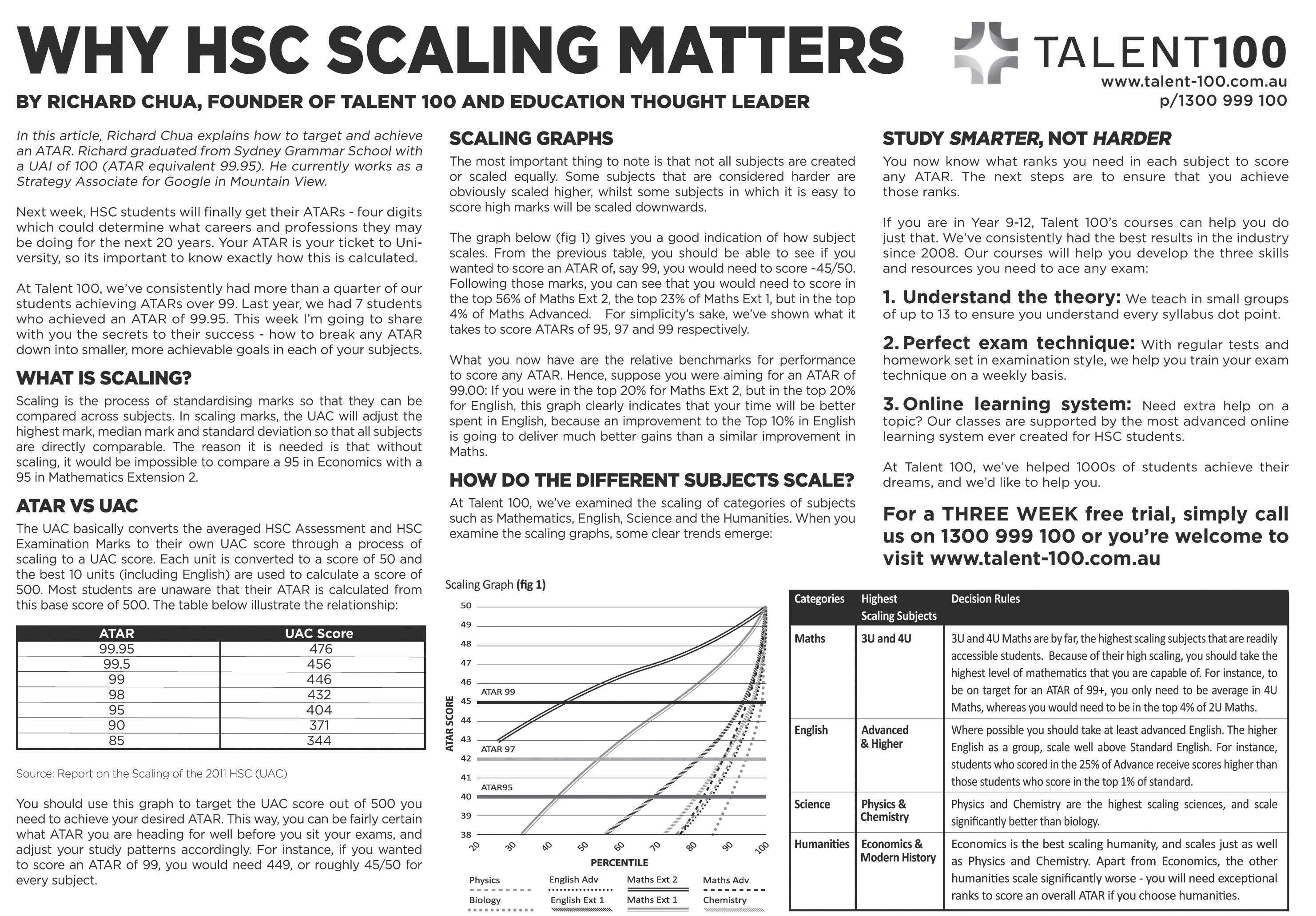
JULY (2) 2013 45 NATIONAL EDITION
food for your face
ome tricks and tips
I been told by models, friends, aunts etc. over the years that really do work!
Coconut oil and soapnuts

For those of you who grew up in India, many of you might have had grandmothers who bathed you when you were a child. Well, my naani used to wash my hair for me till I was about eight. She had a simple but effective ritual for really soft hair.
On Friday nights, she would oil my hair with coconut oil and then gently massage it in. Saturday mornings would see her boil a few soapnuts to make a shikakai solution. This natural soap would rinse out the oil and leave my hair
An edible scrub
baby soft. Unfortunately, these days, with our over-dependence on shampoos and conditioners, no one really follows this old method of washing hair. But, if you have the time and patience, and can find soapnuts or a natural solution made from them, try washing your hair with them and you won’t need conditioners.
Shampoo and conditioner
“When you wash your hair, massage the roots with shampoo to clean the scalp,” the model Mehr Jessia, now the wife of Arjun Rampal the actor, once told me during an interview.
“When you condition it, make sure you condition the ends. The scalp needs to be kept clean and the ends of the hair need the conditioning the most”. It is a tip I practice to this day and make sure I condition the ends of my hair more liberally than I do the rest of the strands. This prevents knotting and my hair doesn’t develop split ends.
Moisturise, moisturise, moisturise
When it comes to skincare, you will find that everyone has a tip to give you. Not all are effective. A very kind lady, who made her own skincare products and ran a beauty salon offering specialised treatments once told me that to have good looking skin in your forties, you should start looking after it in your twenties. I happened to interview her when I was in my twenties, luckily for me. I started a ritual of moisturising my face and neck back then and now it is a habit. Just as one uses deodorant after a shower, similarly I use a skincare cream. The brands have changed over the years, but the ritual hasn’t.

Milky mask
Another skincare tip a friend gave me which also works is a simple face pack you can make at home. Take a teaspoon of dairy whitener and mix it with water to form a thick paste. Apply all over face and neck and leave till it dries. You will feel your facial skin begin to tighten as the pack dries up. Then splash your face with water or stand under the shower to rinse it off. Do not scrub it off with your hands. Used daily, this face pack, along with a weekly exfoliator, will remove blemishes from your skin. It will also leave your skin soft and moisturised, as milk is a natural moisturiser. If you don’t believe me, just try it for two weeks and see for yourself. It is the one skincare tip I follow religiously. And it saves me the bother of going to a parlour for a facial.
A natural scrub we used as kids for our face was a mixture of besan (gram flour), a pinch of turmeric and a tablespoon of milk. The besan is a natural exfoliator, the turmeric is an antiseptic and the milk is a moisturiser. You can clear your skin of dead cells without drying it of its natural softness, and the turmeric keeps blemishes at bay. For any of you wanting to go back to the natural way of life, this is one of the best scrubs you can find. Make it fresh everyday five minutes before you shower. Beats anything that comes out of a bottle or a tube.


Too much sun
If you have ever been sun burned with too much time under the sun on the beach, then you know how painful it is when the skin starts to heal. You don’t want even the lightest of fabrics to touch your skin. But a couple of remedies that help relieve sunburn can be found in your kitchen.
The first one is milk. Yes, just take half a cup of cold milk and dab a piece of cotton in it. Apply this milk all over the sunburnt portions of your body. Wait till the milk dries, then reapply. A shower with lukewarm water after a few doses of this treatment will make your skin feel better.

Another tip is to take kokum (the souring agent we use in dals) and soak it in a cup of water. When the water turns a dark pink, apply onto the skin like the milk. It is a great remedy for sun burn as well, I’ve discovered from personal experience, but I prefer the cold milk treatment. It works much faster.
If any of you wish to start using skin and haircare products that are natural and chemical free, there are solutions available all around. Just start with asking the oldest female member of your family and you will find your answers.
Well, my naani used to wash my hair for me till I was about eight. She had a simple but effective ritual for really soft hair
A natural scrub we used as kids for our face was a mixture of besan (gram flour), a pinch of turmeric and a tablespoon of milk
46 JULY (2) 2013
Beauty
These all natural beauty tips range from soapnuts, besan, milk, turmeric and kokum, and will help to keep your body beautiful without chemicals
www.indianlink.com.au
MINNAl KHONA
for the love of lamb!
A variation of this much loved viand will chase away winter chills, writes

Winter is the time for hearty, wholesome, warming meals, especially when the sky is overcast and there’s an Arctic chill in the air. Lamb is now thought of as a meat for all seasons, but during winter, the traditional Aussie lamb roast, slow-cooked rack of lamb or lamb shanks in gravy are sure to chase away the cold. To warm up, you could try a lamb curry or lamb rogan josh. But for a change, how about moving further east and bringing a touch of Middle Eastern or Mediterranean warmth into your palate. You’ll find these recipes redolent of sunny skies and swaying palms. So enjoy getting warm this winter with these exotic lamb recipes.
Lamb Passanda
2 kg boneless lamb, cubed
4 inch ginger piece
6-8 garlic cloves
4 large onions
4 tbsp cumin
4 tbsp coriander
1 tsp turmeric powder
4 cloves, crushed
2 tbsp oil
8 cardamoms, crushed
125 gms blanched almonds
125 gms cashew nuts
800 mls coconut milk
2 cups water
Juice of 1 lemon
Salt and pepper to taste
In a large heavy bottomed casserole, fry the nuts in half the oil until they are brown. Blend in a food processor until finely chopped. Set aside. Roughly chop the ginger, garlic and onions, and puree in a blender. Next, brown
oil, adding more, if needed. Keep aside. Add the onion mix to the oil, frying on medium flame until it turns dark brown. Add all the spices and cook for two minutes. Add the lamb to the mix again, then add the coconut milk and water. Bring to the boil, then lower the heat and simmer for 90 minutes or until the meat is tender. Add the lemon and season to taste with salt and pepper. Serve with rice or naan
Mediterranean Lamb

700 gms lamb, cubed
3 tbsp oil
1 onion sliced
2 cloves garlic, crushed
1 tsp tomato puree
700 mls meat stock

1 red pepper sliced
¼ finely chopped parsley
2 tbsp cake flour
1 lemon, juice and rind
100 gms soft butter
3 tbsp mixed herbs – parsley, oregano, rosemary (dried or fresh)
1 medium sliced French loaf
Salt and ground black pepper to taste
Preheat the oven to 180 degrees and lightly grease an ovenproof casserole with a little butter. In a separate bowl, mix the butter with herbs, and spread it on one side of the bread slices. Set aside. Mix the cake flour with salt and pepper according to your taste. Next, heat oil in a saucepan and brown the meat cubes. Set aside. Saute onions and garlic in the same saucepan. Add meat, add cake flour, and stir. Add stock and tomato puree, and bring gently to a boil. Transfer the mix to the casserole, cover and bake for 15 minutes. Remove from the oven, add the juice of lemon,
parsley, mixing together lightly. Arrange the slices of bread on top of the mixture, herb side up and bake for 35-40 minutes until the meat is tender and bread topping is golden brown. Serve hot.
Easy Arni Souvlaki
1 leg of lamb cubed
½ cup olive oil
¼ cup vinegar
Juice of 1 lemon
2 tsp dried oregano
2 cloves garlic, crushed
3-4 bay leaves, cut into smaller pieces
Salt and pepper to taste
Place lamb in an earthenwear or glass dish. Add all the ingredients, mix well and cover. Leave to marinate for 12-24 hours, stirring meat occasionally. When ready to cook, thread lamb onto metal skewers and cook under a hot grill or over a glowing charcoal barbeque, turning and basting frequently with marinade juices. Grill for 15 minutes or until cooked to your taste.
Arabian rice with lamb
For the rice
250 gms basmati rice
6 cardamoms
1 medium stick cinnamon
10 mls vinegar
1 tbsp rose water
1 tbsp saffron water
2 tsp fried onion
4 tsp roasted nuts
4 tsp fried raisins
For Arabic masala
1/2 tsp turmeric
3 tsp paprika powder
2 tsp peppercorn powder
4 tsp cumin powder
1 tsp grated nutmeg
1 tbsp cinnamon powder
1 tsp chilli powder (optional)
For the lamb
4 lamb shanks
50 gms ghee or oil
2 tbsp Arabic masala
120 gms yellow lentils
2 tomatoes, cubed
1 red chilli
1 small onion
2 cloves garlic
Lamb stock
Boil the rice in water with the cardamom, cinnamon, salt and a little vinegar. When cooked, toss the rice with the saffron and rose waters, and add the fried onions, raisins and nuts, mixing gently and
aside. Any extra can be bottled for future use. Rub the lamb shanks with a mixture of the ghee, masala, salt and pepper. Coat the bottom of a deep bottomed oven proof casserole with the lentils, tomatoes, and chopped chilli, onion and garlic. Place the lamb shanks over the mix and add stock until the shanks are just covered. Bring the mixture to a boil. Cover and put the casserole in the oven to cook for about 1 ½ – 2 hours at 180 degrees. Cook until the meat is tender. When serving, place the lamb in a bed of warm rice and serve hot. This recipe can be prepared in a slow
JULY (2) 2013 47 NATIONAL EDITION
food



48 JULY (2) 2013 www.indianlink.com.au
mat r imonials

SEEkIng BrIDES
SEEkIng grooMS

looking for a suitable match for my beautiful sister of a sikh family, 37-yearold, divorced with a child living in India at present. responses welcome from India as well as australia from educated, well settled man from sikh/Punjabi family. Please call with serious enquiries only on 0433 141 284.
Well settled family in Australia invites alliance for a 26-year-old, 5”7, Punjabi girl (aust citizen), who is working as a lawyer for the australian govt. seeking Indian boy, caste no bar. Please send biodata/particulars of boy to fordsyd88@gmail.com
Parents looking for suitable match for their 37-year-old, 5’3” tall daughter, hindu, Gujarati, vegetarian, (never married), who has worked as a bank executive for 15 years in Nairobi, Kenya. our daughter has completed caIIb (UK) and mba from cape town University. We are looking for a well-educated man, settled either in sydney or melbourne. Please email proposal with education, job details and recent photo to: sunilruparelia@yahoo.com or lalitj@hotmail.com
Seeking bride for a 27-year-old well settled catholic gentlemen 5’6”, permanent resident, studied Electronics Engineering and working in a steady job as a technology officer earning a good salary. Living in canberra. Please email: catholic_guy_1985@outlook.com
I am a 50-year-old hindu , 5’4’’, australian citizen, never married, and issueless. I am looking for a lady to share life with. contact arun: arun9tiku@yahoo.com.au or 0470 626 483.
Bangalorean gentleman 43-years-old, born in coorg, India. sincere / God fearing. alliance for genuine girlfriend aged 27-45 yrs, possibly early marriage, student, tourist, Pr ladies interested. Please call mr davha for appointment on: 02 9676 2512 or: 0458 153 193.

Seeking match for highly educated, never-married, 5’ 9”, 1975 born sikh Khatri boy. full-time permanent job with decent income in customer service role. Looking for well-educated, never married sikh girl from australia. Early marriage. Phone: 0422 102 242 or email: jas_ghai01@hotmail.com
Australian Citizen Indian man, educated, with a government role, in early 50’s . seeking honest Indian lady for marriage. contact: 0424 015 249 or tamavu@hotmail.com
JULY (2) 2013 49 NATIONAL EDITION
RUN TO wATch
ThIs mARvEL
B HAAg M I l KHA B HAAg
STArrIng: farhan akhtar, sonam Kapoor, rebecca breeds, divya dutta, Prakash raj and Pavan malhotra
WrITEr: Prasoon Joshi
DIrECTor: rakeysh omprakash mehra HHHH
History is created in several ways. one of them is cinema. and if rakeysh omprakash mehra’s Bhaag Milkha Bhaag seems like a nearflawless homage to the flying spirit of India’s greatest runner, it is partly because the story, so nimbly woven into a pastiche of drama, emotion, humour and pathos by Prasoon Joshi, is in no hurry to keep pace with the onscreen milkha’s breathless sprint.

The story of super-sprinter milkha singh unfolds in this exceptional biopic at its own volition. There’s no effort here “to tell a story,” to create an impression or to whip up a dramatic storm to captivate audiences. The synergy in the storytelling seems subliminal.
still, we the audience, fed week after week on mediocrity masquerading as cinema, are riveted to the story of milkha singh for over three hours of playing time.
how come? Well, to begin with it is milkha singh’s own powerful life as India’s superstar sportsperson that sweeps us into the biopic. milkha was so poor he couldn’t afford running shoes, and when he got them, he didn’t know how to run in them. When milk was offered in the army in exchange of running practice, he grabbed it (the run and the milk) with both hands.
a victim of India’s brutal partition, milkha’s story was waiting to be told. and thankfully, no one before mehra saw cinematic potential in his story. If milkha’s story had to be told, the storyteller had to be a master craftsman, and one who doesn’t waste space in selfcongratulatory flourishes.
With immense help from Prasoon Joshi, mehra harnesses milkha’s life-story into an experience that is pure cinema and yet undiluted and uncompromised by the mandatory, often silly, illogical and idiotic semantics of mainstream commercial cinema.
The seamless editing by P. bharathi is impressive. The film is very stylishly cut, but not at the cost of losing the simplicity and the innate asceticism of the sportsman-hero. and yes, there are songs composed by shankar-Ehsaan-Loy,
but they are so effortlessly woven into milkha’s saga that we don’t see them as “song breaks”.
This is as good a time as any to tell you that farhan akhtar does the bhangra as well as any Punjabi. actually, he doesn’t dance. he just flows with the rhythm. I’ve never seen any actor dance with such rhapsodic abundance. Neither have I seen any actor run like farhan.
I don’t know how fast milka ran, but farhan’s milkha doesn’t fake it for even a second. When he runs, he really runs. When he stumbles and takes a fall, we flinch and wince in our seats. farhan’s body language and emotions and expression as milkha is pitch-perfect. farhan doesn’t ‘play’ milkha. The actor occupies milkha’s mind, body and soul.

This isn’t just a film about a sportsperson who brought untold glory to our country. Bhaag Milkha Bhaag is the story of an individual’s journey from nullity to pinnacles of success in a world where politics and violence are constant reminders of how little an individual’s aspirations matter in the larger, often murkier scheme.
In Prasoon Joshi’s interpretation of milkha’s amazing success-story, yearning is the cornerstone to achievement. In 1947, when India became two nations, we see little milkha (Jabtej singh) run for his life to escape the savage butchery that snatches away almost his entire family. only his dear sister, played wonderfully by divya dutta, remains. as we see it, milkha never stopped running.
The ‘run’ as a metaphor of life’s expedient circumstances, runs through the narrative.
happily, the screen time is as much taken up with milkha’s record-breaking achievements on the field, as it is with vignettes from his personal life. There is a robust heartwarming romance between milkha and the vessel-friendly ‘kudi’ biro (sonam Kapoor, looking prettier than ever). The writer and director invest inexpressible warmth in the protagonist’s courtship scenes. We’ve seen this kind of love blossom on Punjab’s soil before. but it still feels special and unique.

farhan does the rest. and he gets
tremendous support from other actors, specially divya dutta, who is incomparably sincere in her role. Pavan malhotra as milkha’s coach is as usual, first-rate.
Unlike other period films in recent times which have conveniently and lazily resorted to antiques, artefacts and vintage songs, the 1950s in Bhaag Milkha Bhaag simply and effortlessly emerge from the character and his milieu.
binod Pradhan’s camera glides across milkha’s inner and outer world, and tells it like it is. There’s a complex design to the seeming simplicity of this saga of a simple sikh who would guzzle two cans of ghee on challenge and run to the winning post on feet mauled by jealous rivals.
Who said life could ever be easy for those who aspire to fly higher than the rest? The beautiful irony of milkha singh’s life that this consummate biopic captures so ably, is that he really didn’t aspire to anything. he ran simply because he had to.
The rest, as they say, is history. Bhaag Milkha Bhaag is the kind of cinema that doesn’t tempt us to share the protagonist’s life with any false hopes. We are driven into a desperate urge to share milkha’s life not only because he ran fast, but because he wasn’t afraid to stumble, falter and fall.
Ironically, this film on milkha rarely slips up, if ever.
Su BHASH K. jHA
50 JULY (2) 2013 www.indianlink.com.au
ENTERTAINmENT
cINE TALK
FLAwED gEm FILLED wITh LOvE, pAssION
lOOt ERA
STArrIng: sonakshi sinha, ranveer singh
WrITEr-DIrECTor: vikramaditya motwane
HHHHH
Abeautiful but deeply flawed film, the eagerly-awaited Lootera floors you with its audacious sensitivity and its tendency to use silences to punctuate emotions.
Indeed, the sequences between varun and Pakhi, played with compelling intensity by ranveer singh and sonakshi sinha, bristle at the seams with unspoken feelings. There are long passages of muted lyricism where silences are used to accentuate the growing passion between a lonely, emotionally and sexually insulated daughter of a feudal family in Kolkata, and the attractive stranger who walks into her life with the promise of passion, only to break her heart into wounding shards.

The love story, apparently inspired by american writer o henry’s short story
The Last Leaf, moves in mysterious ways, but often tends to lose its way in its
search for that elusive horizon where two socially, culturally and economically incompatible people in love, hanker to unite, but seldom do.
The film wears two distinctly ‘classic’ looks in bustling Kolkata and snowy dalhousie, both shot with discreetness by cinematographer mahendra shetty. The Kolkatan periodicity of the 1950s relies excessively on extraneous props. Putting songs of Geeta dutt, mohammed rafi, hemant Kumar and Lata mangeshkar of that era in the backdrop is the easiest and laziest way to get the characters to “feel” the bygone era. I expected motwane to go further in his exploration of the theme of repressed love, but he seems to pull back at crucial turning points. When Pakhi’s lover deserts her on their engagement day, we don’t see Pakhi mourning with her doting father. We only hear her talking about it later. sonakshi’s choked but dignified recrimination recreates unseen moments visually. Yes, her performance is that vivid.
The film looks beautiful, yet comes dangerously close to skipping the soul, but for one clinching factor. sonakshi sinha. so far we’ve seen her
as a mass-appealing queen of blockbusters. Playing the ailing, dying Pakhi in Lootera she comes to a formidable level of histrionic nirvana not obtainable to any of her contemporaries. sonakshi penetrates her character’s bleeding loneliness with fearless integrity.

There are sequences and scattered shots where sonakshi is captured in various postures of unbearable vulnerability. In a sequence of rebuffed ardour, she drops her dignity and drives down to meet the man who suddenly starts avoiding her.
“Will you come tomorrow? day after? Then the day after that,” she whispers in declining hope when he refuses her invitation to come home.
It’s a moment of pleading love that reminded me of shabana a zmi’s celebrated telephone sequence in mahesh bhatt’s Arth ranveer singh, though able and alert in his responses, seems to rely way too much on looking vulnerable, charming and rakish.
Lootera depicts a doomed passion that is at once invigorating and terrifying. Tenderness trickles out of
ThE bUsINEss OF UNFINIshED LIvEs
D-DAY
STArrIng: rishi Kapoor, Irrfan, arjun rampal, huma Qureshi, shruti haasan
DIrECTor: Nikhil advani HHHHH
Fragrant pencils and the stench of blood... Irrfan’s character identifies flavoured pencils with his undying love for his son even when his life is soaked in the blood of traitors. funny how two entirely disparate experiences can co-exist in a work of art!
and make no mistake, Nikhil advani’s sixth feature film, about the enforced extradition of a dawood-like gangster, is an acutely accomplished work of art. but what haunts most is the love between a mysterious Indian intelligence agent and a Pakistani sex worker, both wounded and scarred for life. she in ways that we can see, he more intangibly. but pain, at the end of the day, is pain. shot in expertly constructed brothel sets with the crowded colours of lurid sex suggesting the tragedy of lives lived in borrowed beds, the scenes between arjun rampal and shruti haasan are punctured by piercing silences and
a haunting melody about love, loss and incomplete lives, sung by rekha bharadwaj.
Later, the girl is tortured to painful death by a sadistic butcher, gleefully played by chandan roy sanyal.
In one of the most innovative editing techniques seen in recent times, we see the scarred prostitute’s torture and death through arjun’s eyes as though he were there when it happened.
The love story could have been the entire script of the film. but D-Day - odd title since the antagonist is no more named dawood - has a lot more to say, and it says it with an enrapturing elan that invites us into its midst, without gimmicks.
The story of raW agents on a mission in Pakistan to nab “India’s most Wanted” is told in a tone that favours a detached distance from the proceedings while ensuring we see each character’s life in prismatic close-ups.
Every character in D-Day, even the dreaded bhai, is a prisoner of his own lost dreams and aspirations.
The raW heroes are thrown in our face without elaborate preamble. The very attractive huma Qureshi as the raW agent Zoya has her personal life in
shambles. but we never see her unhappy husband.
We only hear himspeaking about their distressed relationship, in the voice of the very talented raj Kumar Yadav.
Every character, visible or invisible, speaks to us in urgent desperate tones. These are people whose dreams can never come true.
as the plot progresses, it gets only more intriguing until from Karachi we reach, breathlessly, the Indian side of the border where rishi Kapoor gives a sneering speech on the Indian government’s inability to control terrorists and terrorism.
This is as good a place as any to say D-Day is crammed with remarkable actors furnishing the anxious proceedings with a riveting life-force. rishi as the gangster is, of course, first-rate. When is he anything less?
The other actors too are entirely in their element. arjun and shruti’s tragic love story is played out in muted shades. arjun seems to become a more evolved actor with every role. as for Irrfan, his portrayal of a man on a suicidal mission trying to hold on
every pore of this beautifully crafted saga of a love so infinite and so forbidden that it seems to scoff at cruel fate and brutal destiny while carving out a craggy jagged path for the lovers.
vikramaditya motwane’s storytelling is like a coiled twirling stairway to the heart of his irreconcilable protagonists. The film’s muted silences suggest a deep connectivity between pain and love.
sadly, in the midst all the underlying conflicts, poor o henry’s story is almost forgotten. The leaf-leitmotif shyly shows up at the end, making a hasty entry not too convincingly.
Su BHASH K. jHA
to the memory of his wife and son is so vivid you can touch his anguish.
Newcomer sriswara is extremely credible as Irrfan’s wife, while huma is appealing and effective. akaash dahiya as the fourth raW team-member is so much on edge, you want to hold him back from toppling over.
The cinematography by Tushar Kanti ray uses cluttered garish spaces to create a sense of spiritual emptiness.
With this one film, advani joins the ranks of the most accomplished young filmmakers of hindi cinema and by far Karan Johar’s dharma Productions proudest product.
Su BHASH K. jHA
JULY (2) 2013 51 NATIONAL EDITION
ThE bUZZ
Poor turnout for Pran’s funeral although he has been hailed as the greatest villain in the history of bollywood, the turnout from the industry at Pran’s funeral was abysmal. actor-politician shatrughan sinha made his disappointment clear, saying “I saw very few people from the film industry. a man who gave 70 years of his life to the film industry deserved a much heftier send-off”.
sinha himself cancelled a trip to Patna to attend the veteran acting legend’s funeral. only a handful of people like amitabh bachchan, anupam Kher, Karan Johar, raj babbar and shakti Kapoor came to pay their last respects to the 93-year-old actor. certainly not bollywood at its best! fortunately, Pran’s contribution to the hindi film industry is indelible and unforgettable. rIP, Pran saab!
pROUD TO bE pRAN
the man who gave a new status to villainy in Indian cinema is no more! Pran, the versatile actor who became a household name in the 1960s and ‘70s was a legend of bollywood. Pran saab as he was fondly called, had an illustrious career in the Indian film industry that spanned more than six decades, and saw him acting in over 400 films. on July 12, the veteran actor and redoubtable legend passed away after a prolonged illness.
Pran was a master of disguises. from the unforgettable smoke rings he created in the movie Badi behen, or as the flawless sher Khan in Zanjeer with the trademark flicking back of his hair, Pran’s versatility as an artist was evident from the ease with which he portrayed various characters on screen, bringing them to life and making them imminently believable.

as malang chacha of Upkaar, jailer raghuveer singh of Kaalia or the Nepali Pyarelal of Kasauti, Pran gave each character his unique touch. his dialogues are still popular after years; remember ‘Barkhurdar!’ rendered in his baritone voice? his famous run-ins with the big b in Kaalia and Zanjeer are still remembered and revered.
Not many people know that Pran played lead roles in a few films like Khandaan, Halaku and Pilpili Saahib some of his famous movies included Madhumati, Jis Desh Main Ganga Behti Hai, Victoria No. 203, Be-Imaan, Johnny Mera Naam, Don and Duniya amitabh owes his role in Zanjeer to Pran, the turning point of the megastar’s career.
at the time Pran commanded more money than top stars, a rare feat even today, considering that his roles were mostly those of a villain.
a man of great discipline and immense talent, Pran was fond of Urdu poetry and sports like soccer, hockey and cricket, even financing his own soccer team, the d ynamos football club. Pran, a kind human being, once even offered to finance a training trip for Kapil dev to australia, when the cricket board refused to do so.
With his natural good looks, charming mannerisms and rich baritone voice, Pran won millions of hearts globally. villains were at par with heroes in the hindi film industry, thanks to Pran. for him, it was the character that mattered the most, and not the fact that he was a hero or a villain. and he proved this true with his craft.
The fickle film fraternity had turned its back on Pran in the last decade or so. The veteran actor did not receive much recognition or even awards. Even the dadasaheb Phalke award came quite late, in 2013. It’s a real shame that bollywood failed to acknowledge this great artist much earlier. his demise has left a big void in Indian cinema that will be hard to fill. artistes like Pran are born once in a lifetime.
We salute this legend for entertaining the masses for so long with quality work and his outstanding contribution to the hindi film industry. Pran lived up to his name, infusing life into all of the characters he played on screen. Even though he is no more, sweet memories and indelible performances will always linger on in our hearts.
farewell, Pran saab! PERDY MOHINDRu
All about acting, by Vidya Balan from a single mother to a sex symbol, vidya balan has portrayed a range of characters on the big screen, and she’s done a great job. and vidya finds living in another person’s world exciting. “I don’t think it (acting) is about proving oneself. It is about inhibating another person’s world, one you have not been in before. I think as an actor, living another person’s life is exciting,” said the talented actress recently.

her latest role was that of a plump, loud Punjabi woman with an unusual dressing sense in Ghanchakkar, and the actress says she always finds a way to connect with her characters, and managed to do with this one too.
“There is also a part of them, which I connect with. my character in Ghanchakkar is not someone who I could identify with initially, but the point of identification was that she was just happy with herself,” explained vidya. “I might not be happy with myself all the time, but I love people like that. You find that point of identification with the character”.
The movie didn’t rock the box office, but the critics and audience alike have praised vidya’s performance, and she finds this appreciation humbling.
“I feel humbled when people say that. I am just doing work, which I believe in,” said the actress who played central roles in Kahaani and The Dirty Picture, but didn’t mind playing second fiddle in Ghanchakkar
“In the movie, sanju (Emraan hashmi) was the central character. I was not the protagonist. I was ok with that as I love the character. I don’t have set notions and don’t take on that kind of pressure. my only dream was to be an actor and I am living my dream to the fullest,” she said.
vidya is married to siddharth roy
Kapur, managing director of studios, disney UT v, but unlike her husband, she does not want to enter the production business.
“I don’t want to start producing films. I am very greedy about being an actor and I always have a producer at home,” she said.
What about creative satisfaction?
“after The Dirty Picture, I thought I had done everything that needed to be done. but I was even taken aback when rajkumar Gupta came to me with Ghanchakkar. I felt grateful to him that he could think of me in this diametrically opposite character. but he was also making a diametrically opposite film”. Now vidya will be seen with farhan akhtar in Shaadi Ke Side Effects, another challenging avatar for the talented actress (and one which was filmed in australia in parts). but perhaps vidya’s newly married status will help her identify with the role!
More to Milkha than just the moolah!
olympian athlete milkha singh’s biopic didn’t get an overwhelming review, but the Bhaag Milkha Bhaag box office success has thrown the movie business into a tizzy. director rakeysh omprakash mehra admits that collection has indeed surpassed their expectations with the bio-pic raking in rs.55 crore in the first week with rs.3.58 crore collected in the second week in mumbai alone.
“our film’s reach has exceeded all our expectations. We knew milkhaji’s story would have a resonant emotional impact. but we couldn’t have guessed it would reach so far and wide,” said a surprised mehra.
farhan akhtar who plays title role in Bhaag Milkha Bhaag chronicling the life of athlete milkha singh, was overwhelmed by the audience’s reaction to the film.

52 JULY (2) 2013 www.indianlink.com.au
Up-to-date news on what’s hot and happening in Bollywood ENTERTAINmENT
Vidya Balan
“I am just so happy. acceptance and recognition of one’s effort is such a wonderful feeling,” he said. The bio-pic tells of the strife and struggle of Indian sprinter milkha singh’s life. Even veteran actress Jaya bachchan couldn’t hold back her tears after watching a special screening of the movie. she seldom attends movie screenings these days, but made it a point to attend because of the family’s very close relations with the film’s director and farhan.
“after the screening, she just couldn’t control her emotions. she called farhan aside and wept openly, telling him he had lived the pain, suffering and triumph of milkha,” said a source.
farhan refused to comment on Jaya’s emotional response to the film and his performance, saying it was a private moment. but when contacted, Jaya said, “I loved it. farhan was brilliant. I enjoyed a film so much after a long time”.

and that’s not all - showing exemplary attentiveness to the film’s far-reaching inspirational impact, the maharashtra government recently granted tax exemption to the bio-pic. Naturally, mehra is thrilled, saying, “The film would
whO wORE IT bETTER?
Lucy Liu or Sonam Kapoor in Dolce and Gabbana?


share your views with us on our Facebook page
now be accessible to those middle-class Indians who cannot afford the ticket prices at multiplexes. That thought makes me very happy”. The filmmaker hopes other states would follow suit and grant the movie a tax exemption too.
The immediate impact of the ace runner’s saga has also brought about a heightened interest in films related to sports and sportspersons. director omang Kumar is shooting a bio-pic on boxing olympic medallist mary Kom with Priyanka chopra in the lead role, while Ekta Kapoor has bought the movie rights of the life of cricketer mohammed a zharuddin. and a biopic on the life of legendary hockey player dhyan chand is in the pipeline.
an excellent way of telling the stories and struggles of India’s sporting greats, albeit the bollywood way. Well, at least they are preserved for posterity!
An Iftaar surprise a reconciliation between salman Khan and shah rukh Khan would have seemed

unlikely, after years of cold-shouldering each other. since an incident at Katrina Kaif’s birthday bash in 2008 in which the two Khans began taking pangas at each other, they have refused to share space. so it was a surprise to all present when the actors shook hands and hugged each other openly at the Ifatar party of congress leader baba siddiqui recently. or perhaps they had no choice when siddiqui asked them to meet each other! both shah rukh and salman seemed perfectly fine, the latter being the one who took the initiative to shake hands and hug shah rukh. Well, looks like another bridge has been built in bollywood! What’s next, a movie featuring the two? I doubt that!
Madras Cafe cleared by censors filmmaker shoojit sircar has heaved a sigh of relief now that his film Madras Cafe has been cleared by the censor board with a U/a certificate.
“When I was making Vicky Donor, I was very worried about the censors. I thought, it’s a film that deals with sperms, which will get it an a-certificate, but thank God, things went well,” sircar revealed. Vicky Donor released with a U/a certificate and the audiences liked the film so much that the rs.5 crore project earned rs.45 crore at the box office.
“The film didn’t look vulgar and sent across the message perfectly. Luckily, Madras Cafe, which has so much action has got a clean nod from the censors and has got a U/a certificate,” said the director. The movie is a political-thriller, and deals with terrorism and civil war. It was reportedly shot in sri Lanka and India. sircar requested the audience’s indulgence for enjoying the sequence of events in his forthcoming offering.
“I would request the audience not to leave their brains at home. bring your brains and do a bit of research before you come to watch the film,” he stated. featuring John abraham, who has also produced the film, and Nargis fakhri, the film is slated to release in mid-august. In a snippet, John has recently become the brand ambassador for reebok, and promises some really exciting stuff in the near future. John in action is certainly worth a dekko!
cApTION cONTEsT
What’s the chitchat between Madhuri Dixit and Aishwarya Rai Bachchan? Send in your responses to win@indianlink.com.au and win a surprise prize

LAsT IssUE cApTION cONTEsT wINNINg ENTRY
What’s the chitchat between Ranbir Kapoor and Katrina Kaif?

Ranbir: I’m really enjoying the media buzz that’s linking the two of us romantically…
Katrina: I know, isn’t it funny!
sangeeta Parimoo

Lalor Park nsW sangeeta wins a ticket to the new Hindi film
Ramaiya Vastavaiya
JULY (2) 2013 53 NATIONAL EDITION
Farhan akhtar
nargis Fakhri
salman khan
Ask Auntyji
Dear Auntyji
I am an ambitious and driven 40-year-old female and I would appreciate your insight. I have a 17-year-old niece, who I love very much. she is very bright and creative, but she continually frustrates me with not having any idea about what she wants to do with her life after high school. she wants to go to university, but she is unsure of what she wants to study. I find myself getting continually frustrated after each conversation with cheyenne, because each time I offer her some ideas, she shoots them all down. It would appear that not only does she not know what she wants, she has no idea about what she does not want to do. Talking to her about her future goals is like an exercise in trying to decipher the conversation of two demented people on heroin. I don’t know how she can’t know what she likes or dislikes. If I say study medicine, she crinkles her nose. If I say study business, she grimaces. I suggest teaching, and she shrugs. so I find myself feeling frustrated, but fortunately, because I only see her every few weeks, I don’t express my irritation at her. I think that being so bright, she should live to her potential and achieve something useful - instead of being like her mum and staying at home. What are your thoughts auntyji? What is your proposed solution for me? obviously, I love my niece very much and want her to be happy. can you please give me some ideas on the best options here?
Gen Y… should I listen to you?


Auntyji says
hmm. I can completely see your dilemma here. say nothing and have cheyenne meander through life, not knowing what direction to take, or say something and have cheyenne think you’re an interfering aunt. first things first. as much as you are driven and ambitious and you only want a happy, fulfilling future for your niece, this is her life. You are living your life exactly how you want to, and you can provide guidance to cheyenne, but you must not impose your expectations on her. If she wants to go to university and have a high-powered job, that’s a decision she needs to make. If she wants to stay at home and have babies and raise them without putting them in daycare, then that is her option as well. I suggest you start by changing your thinking. You are there to provide guidance to cheyenne, if she asks for it. If she doesn’t, then leave it at that. cheyenne’s crinkling of her nose and shrugging of her shoulders are signs that she is probably being polite and not wanting to say to you that really, she does not want to talk about her future career, she is currently stressed out about her hsc. so your job is to support her by saying that whether she wants to be a doctor, lawyer, engineer or housewife, you will be there to help her if she needs you. Then leave it at that. and please, don’t make sarcastic comments to her about how she will end up as a mere housewife, because that is doubly insulting. so, I suggest you re-orient your thinking, and leave cheyenne alone. Talk to her about things that will decrease her anxiety, not increase it. so talk about fashion or T v shows. Leave it at that. If you want to be a hip aunt, you will need to step up your game, girly, and learn that your drive and ambitions are yours alone. There is no rule that says that this needs to be passed to the next generation.
One potato, two potato…
Dear Auntyji
my sister-in-law makes the best mashed potatoes ever, and no matter how much I try to recreate it, I can’t seem to perfect the recipe. I have asked her for her recipe, but she makes excuses and does not give it to me. do you have a good recipe that you would like to share with me please, auntyji? I love mashed potatoes and mostly have it for special occasions only (because I am mindful of getting fat). so can you help?
Auntyji says
o f course I can help you my little laccha paratha. I have a particularly good recipe that I am happy to share with you. but be mindful, this recipe is for those people who don’t eat mashed potatoes every day. If you eat this dish every day, very soon you too will become a golu matolu aloo yourself – all shapeless and jiggly with each step. To, pehle, take 4 medium unbrushed aloo. Now I am not fussed, but you will need to cook them till they are soft. You can cut them into chunks and boil them gently, or you can boil them whole, or steam them. Either way, the aloo must be cooked completely and drained well. Now, once cooked and while still hot, leave them in the pan, and add ½ cup of cream (the proper kind, not thickened) and about 75 grams of real butter (no margarine or any of that rubbish – get the best quality butter you can find). Then, mash it all up while on low heat. Turn off the heat and continue mashing until there are no lumps left. You can add a little more cream if the mixture appears a bit dry. The potatoes should be very fluffy and light. once done, add a dollop of butter to the middle, and let it melt. Then serve. You will find this mashed potato so rich and tasty that you will want to eat it by itself. Which you should, but of course, with accompaniments, it is quite superb. Now remember, don’t do it that often, otherwise you will become a petu. Good luck with this recipe, I am sure you will love it very much. Write to me and tell me how it turned out for you.

54 JULY (2) 2013 www.indianlink.com.au
B aCKCH at Email info@indianlink.com.au Do you have a question for Auntyji?

JULY (2) 2013 55 NATIONAL EDITION
tHANKS D AD !
INDIAN l INK FA t HER OF t HE YEAR AWARD
Do you know a super special dad out there in the community who deserves the title?
Fathers are those special people who are like our rocks in life. They’re our foundation and are there to help us out in times of need.
That’s why at Indian Link we would like to invite nominations for our inaugural Indian Link Father fo the Year Award 2013 from the Australian Indian community. If your father, husband, brother, friend, or anyone you know is a very special dad, you may want to nominate them for this award.
How to enter?
Tell us in 300 words or less why your nominee should win. Include photographs of the nominee, and any supporting documents.
Email entry to: win@indianlink.com.au
Get your entry in by 5pm on August 25, 2013 Prize?
The award-winning father will receive special prizes including $500 from Indian Link.

The award winner will also feature in the September edition of Indian Link, as well as on Indian Link Radio.
Criteria for nominations
The nominee must be currently living in Australia as a permanent resident or an Australian citizen. The nominee must have certain special qualities that make him stand out from the crowd. Employees, as well as friends of family of employees of Indian Link cannot enter the competition.
We look forward to seeing your nominations!
56 JULY (2) 2013 www.indianlink.com.au

JULY (2) 2013 57 NATIONAL EDITION

58 JULY (2) 2013 www.indianlink.com.au

JULY (2) 2013 59 NATIONAL EDITION
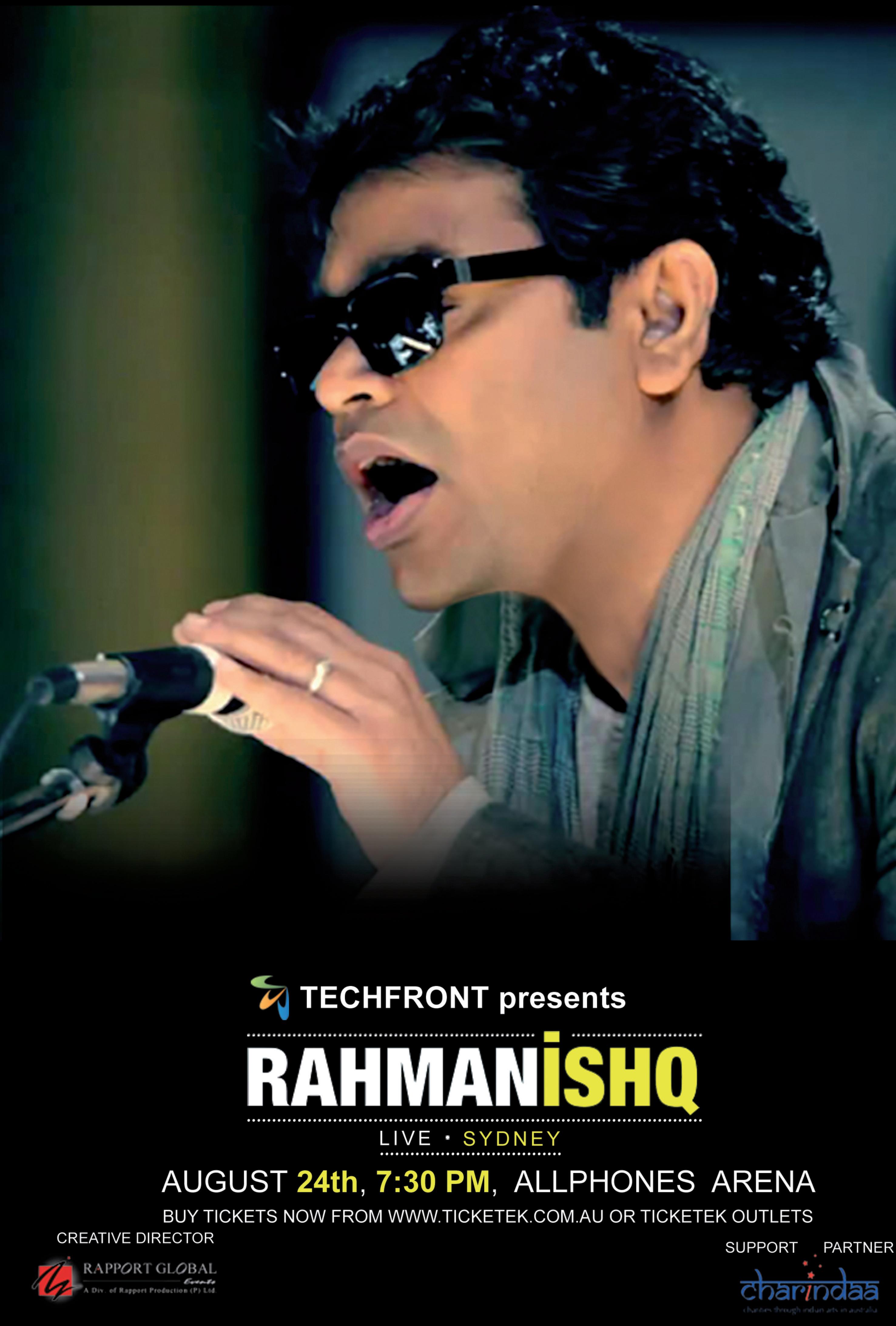
60 JULY (2) 2013 www.indianlink.com.au
































































































 Photos: Dolly Singh Miranda and Rajni Anand Luthra
Photos: Dolly Singh Miranda and Rajni Anand Luthra
























































































